Socket FM1 — AMD — WikiChip
Socket FM1 was the socket for OPGA-905-packaged AMD microprocessors, the first generation of AMD APUs, desktop processors with integrated graphics. Its counterpart for mobile processors is Socket FS1. Socket FM1 was superseded by Socket FM2.
All processors for Socket FM1, codename «Llano», are members of AMD’s Family 12h with CPU cores based on the K10 microarchitecture, and were fabricated on a 32 nm SOI process.
Contents
- 1 Features
- 2 Chipsets
- 3 Processors using Socket FM1
- 4 Package Diagram
- 5 Socket Outline
- 6 Pin Map
- 6.1 Pin Description
- 7 References
- 8 See also
Features[edit]
- 905-pin lidded micro pin grid array package, 1.27 mm pitch, 31 × 31 pins, 40 × 40 mm, organic substrate
- 2 × 64/72 bit DDR3 SDRAM interface up to 933 MHz, PC3-14900 (DDR3-1866), 29.9 GB/s
- Up to 4 UDIMMs or SODIMMs (2 per channel), up to 16 Gbyte per UDIMM, ECC supported
- JEDEC 1.
5V, 1.35V
- PCIe Gen 1.0 and 2.0 (5 GT/s)
- Configurable x16 external graphics card (GFX) link (x16, x8, x4, up to 2 ports, DDI)
- Configurable x4 General Purpose Ports (1×4, 2×2, 1×2 + 2×1, 4×1)
- x4 Unified Media Interface to FCH
- Two independent display controllers
- Six Digital Display Interfaces
- 2 × single link
- 4 × multiplexed with 1×4 (dual link DVI 1×8) GFX lanes each
- DisplayPort / eDP 1.1a
- Single/dual link DVI, HDMI 1.4a, HDCP
- Six Digital Display Interfaces
- Power Management
- AMD PowerNow! technology
- ACPI P-states, processor power states C0, C1, sleep states S0, S3, S4, S5
- Northbridge P-states
- PCIe core power gating, power-down for unused lanes
- Thermal Controls
- Sideband temperature control
- Hardware thermal control (HTC)
- Local HTC
- DRAM thermal protection
Chipsets[edit]
- AMD FCH A55/A75 «Hudson-D2/D3»
Processors using Socket FM1[edit]
- AMD A-Series APU
- AMD E2-Series APU
- AMD Athlon II X2, X4
- AMD Sempron X2
Package Diagram[edit]
OPGA-905 package (UOF 905). All dimensions in millimeters.
All dimensions in millimeters.
Socket Outline[edit]
Socket FM1. All dimensions in millimeters.
Pin Map[edit]
Pin Description[edit]
| Signal | Description |
|---|---|
| ALERT_L | Programmable pin that can indicate different events, including a SB-TSI interrupt |
| CLKIN_H/L | Differential PLL Reference Clock |
| DBREQ_L, DBRDY | Debug Request/Ready |
| DISP_CLKIN_H/L | Display Controller Reference Clock |
| DMAACTIVE_L | Indicates System DMA Activity to prevent NB P-state transition |
| DP0/DP1/DP2/DP3/DP4/DP5_AUXP/N | DisplayPort Auxiliary Channel |
| DP0/DP1/DP2/DP3/DP4/DP5_HPD | DisplayPort Hot Plug Detect |
| DP0/DP1_TXP/N[3:0] | DisplayPort Differential Transmitter |
| DP_AUX_ZVSS | Compensation Resistor to VSS |
| DP_BLON | Display Panel Backlight Enable |
| DP_DIGON | Display Panel Power Enable |
| DP_VARY_BL | Display Backlight Brightness Control |
| FM1R1 | |
| MA0/MA1/MB0/MB1_CS_L[1:0] | DRAM Chip Select |
| MA0/MA1/MB0/MB1_ODT[1:0] | DRAM Enable Pin for On Die Termination |
| MA/MB_ADD[15:0] | DRAM Column/Row Address |
| MA/MB_BANK[2:0] | DRAM Bank Address |
| MA/MB_CAS_L | DRAM Column Address Strobe |
| MA/MB_CHECK[7:0] | DRAM ECC Bits |
| MA/MB_CKE[1:0] | DRAM Clock Enable |
| MA/MB_CLK_H/L[7:0] | DRAM Differential Clock |
| MA/MB_DATA[63:0] | DRAM Data Bus |
| MA/MB_DM[8:0] | DRAM Data Mask |
| MA/MB_DQS_H/L[8:0] | DRAM Differential Data Strobe |
| MA/MB_EVENT_L | DRAM Thermal Event Status |
| MA/MB_RAS_L | DRAM Row Address Strobe |
| MA/MB_RESET_L | DRAM Reset Pin for Suspend-to-RAM Power Management Mode |
| MA/MB_WE_L | DRAM Write Enable |
| M_VREF | DRAM Interface Voltage Reference |
| M_ZVDDIO | Compensation Resistor to VDDIO |
| PROCHOT_L | Processor in HTC-active state |
| PWROK | Voltages and CLKIN have reached specified operation |
| P_GFX_TX/RXP/N[15:0] | External graphics card Transmit/Receive Data Differential Pairs |
| P_GPP_TX/RXP/N[3:0] | General Purpose Ports Transmit/Receive Data Differential Pairs |
| P_UMI_TX/RXP/N[3:0] | Unified Media Interface Transmit/Receive Data Differential Pairs |
| P_ZVDDP | Compensation Resistor to VDDP Power Supply |
| P_ZVSS | Compensation Resistor to VSS |
| RESET_L | Processor Reset |
| RSVD | Reserved |
| SIC, SID | Sideband Temperature Sensor Interface Clock/Data |
| SVC, SVD | Serial VID Interface Clock/Data |
| TCK, TDI, TDO, TMS, TRST_L | JTAG Interface |
| TEST* | Test signal |
| THERMDA, THERMDC | Thermal Diode Anode, Cathode |
| THERMTRIP_L | Thermal Sensor Trip output |
| VDD | Core Power Supply |
| VDD_SENSE | VDD Voltage Monitor Pin |
| VDDA | Filtered PLL Supply Voltage |
| VDDIO | DRAM I/O Ring Power Supply |
| VDDIO_SENSE | VDDIO Voltage Monitor Pin |
| VDDNB | Northbridge Power Supply |
| VDDNB_CAP_1 | |
| VDDNB_CAP_2 | |
| VDDNB_SENSE | VDDIO Voltage Monitor Pin |
| VDDP_A/B | |
| VDDP_SENSE | VDDP Voltage Monitor Pin |
| VDDR | VDDR Power Supply |
| VDDR_SENSE | VDDR Voltage Monitor Pin |
| VSS | Ground |
| VSS_SENSE | VSS Voltage Monitor Pin |
References[edit]
- «Socket FM1 Design Specification», AMD Publ.
 #47610, Rev. 3.00, August 2011
#47610, Rev. 3.00, August 2011 - «BIOS and Kernel Developer’s Guide (BKDG) For AMD Family 12h Processors», AMD Publ. #41131, Rev. 3.02, October 6, 2011
- «Family 12h AMD A-Series Accelerated Processor Product Data Sheet», AMD Publ. #49894, Rev. 3.01, October 2011
- «Family 12h AMD E2-Series Accelerated Processor Product Data Sheet», AMD Publ. #49895, Rev. 3.01, October 2011
- «Family 12h AMD Athlon™ II Processor Product Data Sheet», AMD Publ. #50322, Rev. 3.00, December 2011
- «Family 12h AMD Sempron™ Processor Product Data Sheet», AMD Publ. #50321, Rev. 3.00, December 2011
- «Revision Guide for AMD Family 12h Processors», AMD Publ. #44739, Rev. 3.10, March 21, 2012
See also[edit]
- Socket FS1
- Socket FM2
AMD FM1/2/2+ Quiet CPU Coolers
The FM1 socket has been available since 2011 and is dedicated for AMD’s APU (Accelerated Processing Unit). AMD has managed to integrate GPU functions into the CPU, giving it excellent all round performance.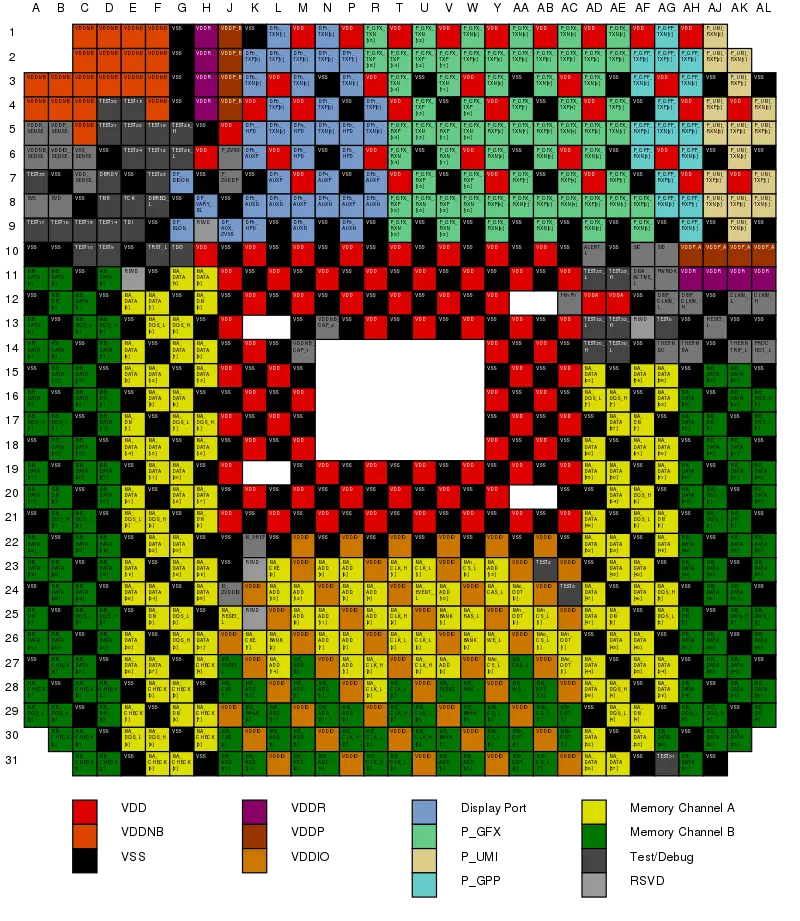 The marketing name for these new APUs is AMD Fusion. The FM2 socket is very similar to FM1 therefore you will find that if a CPU cooler fits FM1 it will also fit FM2, and the same goes for FM2+.
The marketing name for these new APUs is AMD Fusion. The FM2 socket is very similar to FM1 therefore you will find that if a CPU cooler fits FM1 it will also fit FM2, and the same goes for FM2+.
As always, if you are still unsure which CPU cooler is right for you, please read our article “How do I choose a CPU cooler?” and remember to check the TDP of your CPU to aid identifying a suitable cooler.
Socket FM1
The table below provides information about each cooler to help you quickly identify the most suitable product for your needs. Each column can be sorted, making it easy to determine a cooler of a certain height or a specific noise level. Please note, AIO water coolers are not shown on this table due to their unique characteristics.
Sort by:Price (high to low)Price (low to high)NameManufacturerMost popular firstNewest firstOldest first
Only show:Show:Products in stockSpecial offers
Only 16 left in stock, 40 more on order» >Only 16 left in stock, 40 more on order
€109.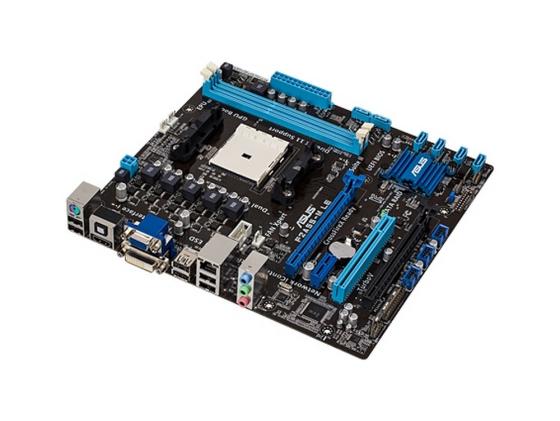 27
27
Add to Basket
- All black version of the award winning NH-U12A
- 140mm class performance in 120mm size
- Excellent case, RAM and PCIe compatibility
- Quiet, state-of-the-art NF-A12x25 120mm fans
- Includes high-end NT-h2 thermal paste and SecuFirm2 mounting system
- Renowned Noctua quality backed up by 6-year manufacturer’s warranty
- Compatible with Intel LGA1700/1200/115x/2011/2066 and AMD AM4/AM3/AM2/FM2/FM1
More Details
€109.27
Add to Basket
Only 16 left in stock, 40 more on order» >Only 16 left in stock, 40 more on order
Only 11 left in stock, 80 more due on 31 Oct» >Only 11 left in stock, 80 more due on 31 Oct
€95.05
Add to Basket
- All-black version of Noctua’s award-winning NH-D15
- Widened fin stack and expanded heatpipe layout
- Dual NF-A15 140mm black fans
- SecuFirm2 mounting system
- Compatible with Intel LGA1700/1200/115x/2011/2066 and AMD AM4/AM3/AM2/FM2/FM1
More DetailsB-Grade available
€95.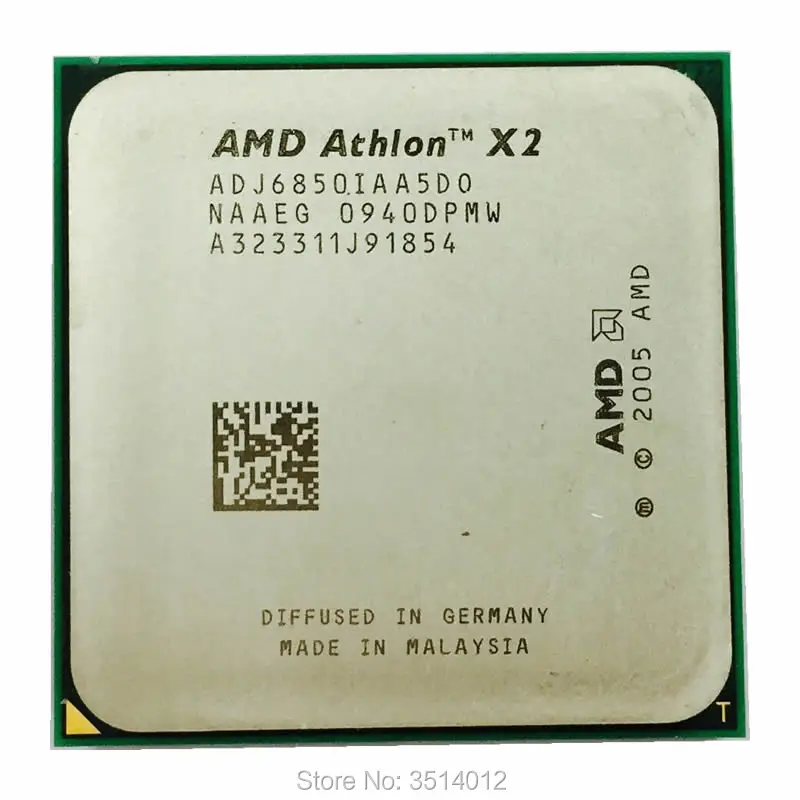 05
05
Add to Basket
Only 11 left in stock, 80 more due on 31 Oct» >Only 11 left in stock, 80 more due on 31 Oct
Only 29 left in stock, 40 more on order» >Only 29 left in stock, 40 more on order
€85.55
Add to Basket
- Based on the award-winning NH-D14
- Widened fin stack and expanded heatpipe layout
- Dual NF-A15 140mm fans
- SecuFirm2 mounting system
- Compatible with Intel LGA1700/1200/115x/2011/2066 and AMD AM4/AM3/AM2/FM2/FM1
More DetailsB-Grade available
€85.55
Add to Basket
Only 29 left in stock, 40 more on order» >Only 29 left in stock, 40 more on order
Only 7 left in stock, 40 more on order» >Only 7 left in stock, 40 more on order
€85.55
Add to Basket
- The all black version of the NH-D15S
- Asymmetrical layout for better PCIe compatibility
- Single NF-A15 PWM 140mm fan
- SecuFirm2 mounting system
- Compatible with Intel LGA1700/1200/115x/2011/2066 and AMD AM4/AM3/AM2/FM2/FM1
More Details
€85. 55
55
Add to Basket
Only 7 left in stock, 40 more on order» >Only 7 left in stock, 40 more on order
21 in stock
€85.51
Add to Basket
- 140mm class performance in 120mm size
- Excellent case, RAM and PCIe compatibility
- Quiet, state-of-the-art NF-A12x25 120mm fans
- Includes high-end NT-h2 thermal paste and SecuFirm2 mounting system
- Renowned Noctua quality backed up by 6-year manufacturer’s warranty
- Compatible with Intel LGA1700/1200/115x/2011/2066 and AMD AM4/AM3/AM2/FM2/FM1
More Details
€85.51
Add to Basket
21 in stock
Only 17 left in stock, 24 more on order» >Only 17 left in stock, 24 more on order
€76.04
Add to Basket
- Based on the award-winning NH-D15
- Asymmetrical layout for better PCIe compatibility
- Single NF-A15 PWM 140mm fan
- SecuFirm2 mounting system
- Compatible with Intel LGA1700/1200/115x/2011/2066 and AMD AM4/AM3/AM2/FM2/FM1
More Details
€76. 04
04
Add to Basket
Only 17 left in stock, 24 more on order» >Only 17 left in stock, 24 more on order
60 on order. At present we do not have a delivery date from our supplier, but we are accepting back orders.
€71.29
Add to Basket
- All-black version of Noctua’s award-winning NH-U12S
- NF-F12 120mm PWM black fan
- Compatibility with past and future sockets
- Six year warranty
- NT-h2 thermal compound
- Compatible with Intel LGA1700/1200/115x/2011/2066 and AMD AM4/AM3/AM2/FM2/FM1
More Details
€71.29
Add to Basket
60 on order. At present we do not have a delivery date from our supplier, but we are accepting back orders.
16 in stock
€68.43
Add to Basket
- Six heatpipe C-type design
- NF-A14 140mm fan supplied
- Low profile option
- Excellent component cooling
- SecuFirm2 multi-socket mounting system
- NT-h2 thermal compound
- Compatible with Intel LGA1700/1200/115x/2011/2066 and AMD AM4/AM3/AM2/FM2/FM1
More Details
€68. 43
43
Add to Basket
16 in stock
50 in stock
€68.43
Add to Basket
- Award-winning NH-U series
- Full RAM compatibility on LGA2011 & LGA2066
- NF-A15 140mm PWM Fan
- Compatibility with past and future sockets
- Six year warranty
- NT-h2 thermal compound
- Compatible with Intel LGA1700/1200/115x/2011/2066 and AMD AM4/AM3/AM2/FM2/FM1
More Details
€68.43
Add to Basket
50 in stock
44 in stock, 24 more on order
€65.07
Add to Basket
- Five dual heat pipes
- Award winning NH-U design
- Supplied with a NF-A9 premium fan
- Improved compatibility
- SecuFirm2™ mounting system
- Includes Noctua NT-h2 high-end thermal compound
- Compatible with Intel LGA1700/1200/115x/2011/2066 and AMD AM4/AM3/AM2/FM2/FM1
More Details
€65. 07
07
Add to Basket
44 in stock, 24 more on order
215 in stock
€62.26
Add to Basket
- Totally fanless CPU cooler
- Uses patented IcePipe technology
- Can cool Intel & AMD CPUs with TDP of 80 watts or less
- Maintenance free and dust free
- Absolutely silent in operation
- Compatible with Intel LGA1200/1150/1151/1155/1156 and AMD AM4/FM/AM series
More Details
€62.26
Add to Basket
215 in stock
7 in stock
€60.94
Add to Basket
- Twin-Tower-Design
- Compact height without loss of cooling performance
- Flexible Fan mounting
- Equipped with reliable Slip Stream Series fans
- Intel and AMD compatible, LGA1700 ready
More Details
€60.94
Add to Basket
7 in stock
Only 17 left in stock, 48 more on order» >Only 17 left in stock, 48 more on order
€59.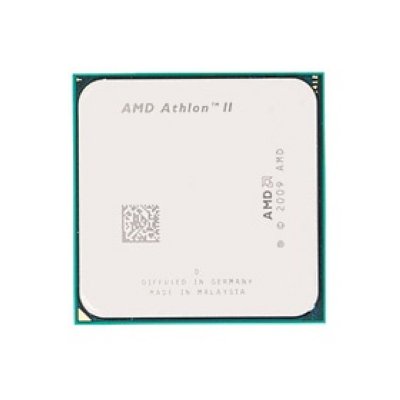 88
88
Add to Basket
- Award-winning NH-U series
- Full RAM compatibility on LGA2011 & LGA2066
- NF-F12 120mm PWM Fan
- Compatibility with past and future sockets
- Six year warranty
- NT-h2 thermal compound
- Compatible with Intel LGA1700/1200/115x/2011/2066 and AMD AM4/AM3/AM2/FM2/FM1
More Details
€59.88
Add to Basket
Only 17 left in stock, 48 more on order» >Only 17 left in stock, 48 more on order
35 in stock
€56.75
Add to Basket
- Great performance and easy installation
- Supplied with a Kaze Flex II 120 PWM fan
- Total of six U-shaped heatpipes
- Asymmetric design
- Extremely quiet, from only 4.0 dBA
- Compatible with Intel LGA1700/1200/115x/2011/2066 and AMD AM4/AM3/AM2/FM2/FM1
More Details
€56. 75
75
Add to Basket
35 in stock
14 in stock
€55.24
Add to Basket
- New and improved Ninja!
- Utilises six 6mm U-shaped heatpipes
- Exceptionally quiet, starting from just 4 dBA
- Supplied with two Kaze Flex 120 PWM fans
- Compatible with Intel LGA775/1200/115x/1366/2011 and AMD AM4/AM3/AM2/FM2/FM1
More Details
€55.24
Add to Basket
14 in stock
74 in stock
€54.28
Add to Basket
- Five dual heat pipes
- Award winning NH-U design
- Supplied with a NF-A9 premium fan
- Improved compatibility
- SecuFirm2™ mounting system
- Includes Noctua NT-h2 high-end thermal compound
- Compatible with Intel LGA1700/1200/115x/2011/2066 and AMD AM4/AM3/AM2/FM2/FM1
More Details
€54.28
Add to Basket
74 in stock
23 in stock, 24 more on order
€47. 52
52
Add to Basket
- Four dual heat pipes
- Dual heatsink design
- Supplied with a NF-A9 premium fan
- SecuFirm2™ mounting system
- Includes Noctua NT-h2 high-end thermal compound
- Compatible with Intel LGA2011/2066/1155/1156/1150 and AMD AM4/FM1/FM2(+)/AM3+/AM3/AM2+/AM2
More Details
€47.52
Add to Basket
23 in stock, 24 more on order
74 in stock
€47.52
Add to Basket
- Low profile cooler, ideal for media PCs
- Excellent performance for its class
- Supplied with NF-A12x15 PWM premium fan
- Compatible with Intel LGA2011/2066/1151/1155/1156/ and AMD AM4/FM1/AM3+/AM3/AM2+/AM2
More Details
€47.52
Add to Basket
74 in stock
3 in stock
€47.15
Add to Basket
- Asus approved TUF Gaming Alliance CPU cooler
- Features H.
 P.M.S. mounting system
P.M.S. mounting system - Exceptionally quiet, from only 4.0 dBA
- Equipped with a RGB Kaze Flex PWM fan
- Intel and AMD compatible
More Details
€47.15
Add to Basket
3 in stock
Coming soon
€41.55
- Virtually silent low profile cooler, only 69mm tall
- Supplied with Scythe 120mm Slim PWM fan
- New FSMB4 mounting system
- Compatible with most Intel and AMD sockets
More Details
€41.55
Coming soon
26 in stock
€36.13
Add to Basket
- Advanced Copper-Based Heatsink with 200W TDP Support
- Six Soldered U-Stacked Power Heat Pipes
- Shark-Tooth Edge Fins
- Smart High Pressure RGB LED Fan
- High-Class Nickel Plating
- Compatible with Intel and AMD CPUs
More Details
€36. 13
13
Add to Basket
26 in stock
18 in stock
SPECIAL OFFER
€35.65 (was €44.58)
Add to Basket
- Greater performance and easier installation
- Supplied with a GlideStream 140mm PWM fan
- Total of six U-shaped heatpipes
- Features TMAPS for better airflow and performance
- Extremely quiet, from only 13.0 dBA
- Compatible with Intel and AMD
More Details
€35.65 (was €44.58)
Add to Basket
18 in stock
11 in stock
€33.65
Add to Basket
- Low profile — ideal for media PCs
- Very quiet 4-pin PWM fan, from only 18.0 dBA
- Four heatpipes for quick heat transfer
- Compatible with most Intel and AMD sockets
More Details
€33.65
Add to Basket
11 in stock
11 in stock
€33.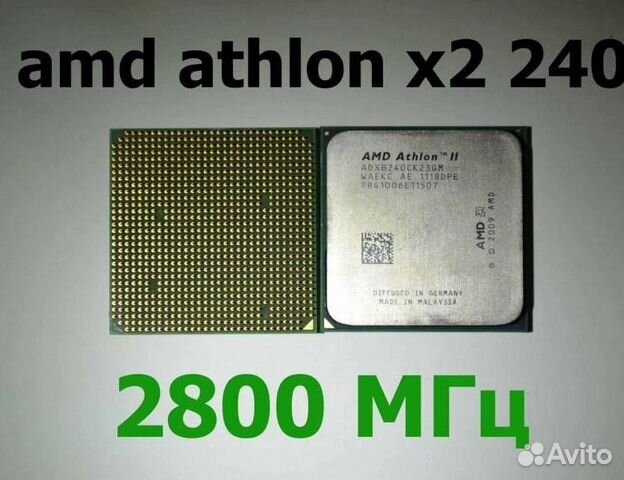 46
46
Add to Basket
- High performance top-flow CPU cooler
- Extremely quiet 120mm PWM fan, from 4dBA
- Four 6mm heatpipes
- Simple installation
- Intel and AMD compatible
More Details
€33.46
Add to Basket
11 in stock
88 in stock
€31.36
Add to Basket
- Four Power Heatpipes with Direct Touch Technology
- High-Class Black Electrophoretic Coating
- Stacked Soldered Heatpipes & Fins
- Intelligent PWM Fan Control Curve
- Ultra-quiet Operation, from 12dBA
- Compatible with Intel and AMD sockets
More Details
€31.36
Add to Basket
88 in stock
31 in stock
€30.32
Add to Basket
- Quiet 92mm PWM fan, from 7.2 dB(A)
- Fan speed: 300 — 2300 RPM ±10% from only 7.3 dBA
- Improved cooling efficiency
- Easy to install, no tools required
- Compatible with Intel: LGA1366/115x/775 and AMD: FM1/AM3+/AM3/AM2+/AM2/AM4
More Details
€30.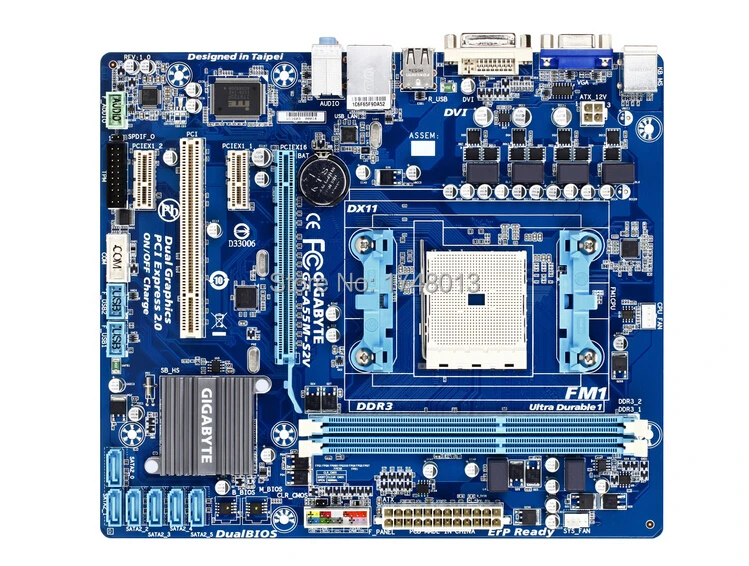 32
32
Add to Basket
31 in stock
12 in stock
SPECIAL OFFER
€22.80 (was €28.51)
Add to Basket
- Four Power Heatpipes with Direct Touch Technology
- Stacked Soldered Heatpipes & Fins
- Intelligent PWM Fan Control Curve
- Ultra-quiet Operation, from 12dBA
- Optimised Fan Blades
- Compatible with Intel LGA1366/115x/775 and AMD FM2+/FM2/FM1/AM3+/AM3/AM2+/AM2/AM4
More Details
€22.80 (was €28.51)
Add to Basket
12 in stock
9 in stock
€17.10
Add to Basket
- Dual power direct contact heatpipes
- Advanced heatsink
- 92mm smart PWM fan
- High-class black electrophoretic coating
- Compatible with Intel and AMD
More Details
€17. 10
10
Add to Basket
9 in stock
I recommend Quiet PC
I recommend Quiet PC. Everything worked just fine. Perfect.
(Review via Trustpilot)
AMD A6-3600 QUAD CORE 2.1GHz (SOCKET FM1)
SKU : APUA6-3600
AMD A6-3600 QUAD CORE 2.1GHz (SOCKET FM1)
| Type | CPU / Microprocessor |
| Market segment | Desktop |
| Family |
AMD A6-Series |
| Model number ? | A6-3600 |
| CPU part numbers |
|
| Frequency ? | 2100 MHz |
| Turbo frequency | 2400 MHz |
| Package | 905-pin organic lidded micro Pin Grid Array (UOF905) |
| Socket | Socket FM1 |
| Size | 1.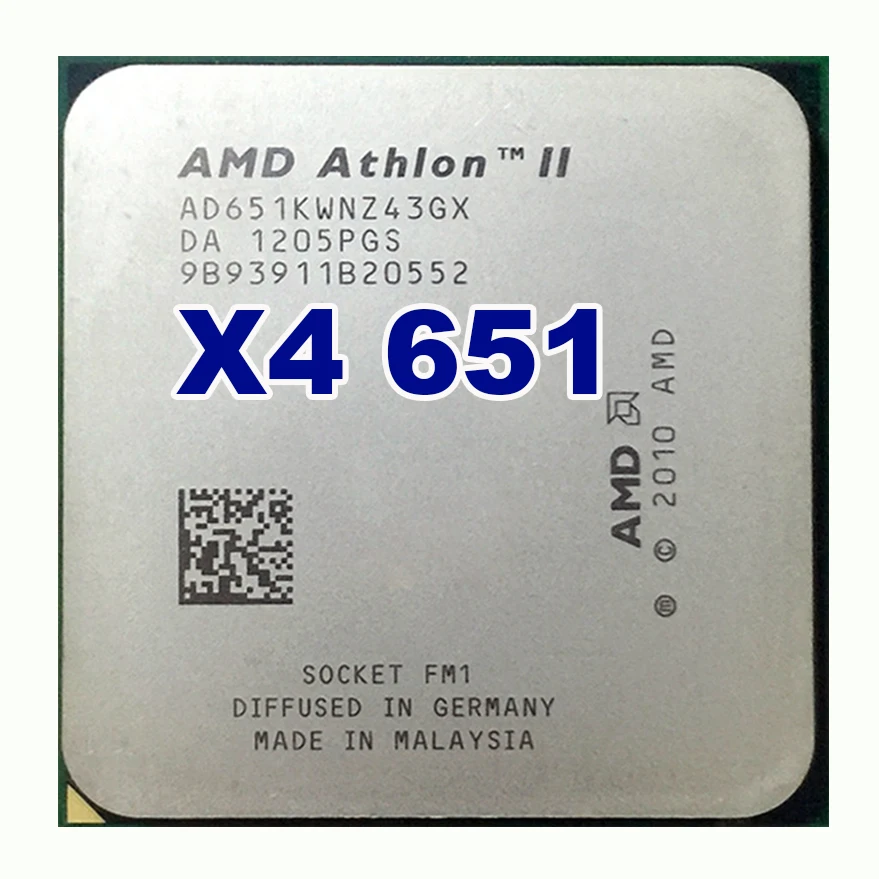 57″ x 1.57″ / 4cm x 4cm 57″ x 1.57″ / 4cm x 4cm |
| Weight | 1.4oz / 39g |
| Introduction date | August 8, 2011 |
| Price at introduction | $109 |
| Architecture / Microarchitecture | |
| Microarchitecture | K10 |
| Platform | Lynx |
| Processor core ? | Llano |
| Core stepping ? | LN-B0 |
| CPUID | 300F10 |
| Manufacturing process | 0.032 micron 1178 million transistors |
| Die size | 227mm2 |
| Data width | 64 bit |
| The number of CPU cores | 4 |
| The number of threads | 4 |
| Floating Point Unit | Integrated |
| Level 1 cache size ? | 4 x 64 KB 2-way set associative instruction caches 4 x 64 KB 2-way set associative data caches |
| Level 2 cache size ? | 4 x 1 MB 16-way set associative caches |
| Level 3 cache size | None |
| Multiprocessing | Uniprocessor |
| Features |
|
| Low power features | PowerNow! |
| Integrated peripherals / components | |
| Integrated graphics | GPU Type: Radeon HD 6530D Shader cores: 320 Base frequency (MHz): 443 |
| Memory controller | The number of controllers: 1 Memory channels: 2 Supported memory: DDR3-1866 Maximum memory bandwidth (GB/s): 29. 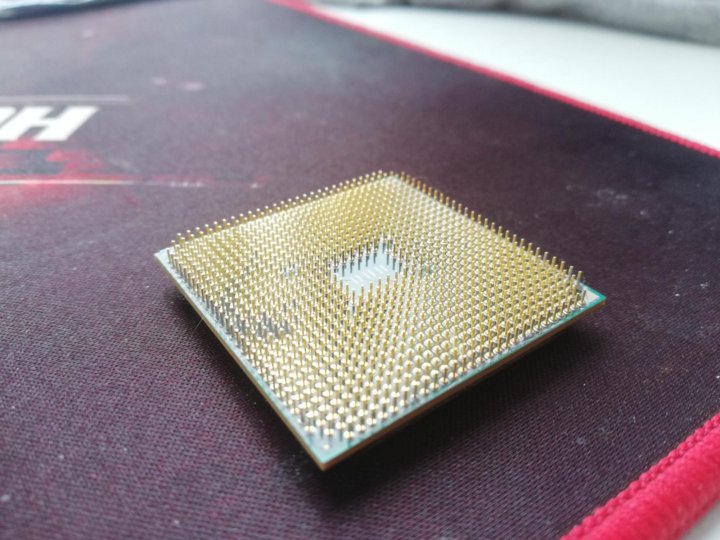 9 9 |
| Other peripherals |
|
| Electrical / Thermal parameters | |
| V core ? | 0.45V – 1.4125V |
| Maximum operating temperature ? | 70.5°C |
| Thermal Design Power ? | 65 Watt |
CONDITION: PULLED
WARRANTY: 90 DAY
Category: CPU’s / APU’s
-
Description
-
Reviews (0)
AMD A6-3600 QUAD CORE 2.1GHz (SOCKET FM1)
| Type | CPU / Microprocessor |
| Market segment | Desktop |
| Family |
AMD A6-Series |
| Model number ? | A6-3600 |
| CPU part numbers |
|
| Frequency ? | 2100 MHz |
| Turbo frequency | 2400 MHz |
| Package | 905-pin organic lidded micro Pin Grid Array (UOF905) |
| Socket | Socket FM1 |
| Size | 1.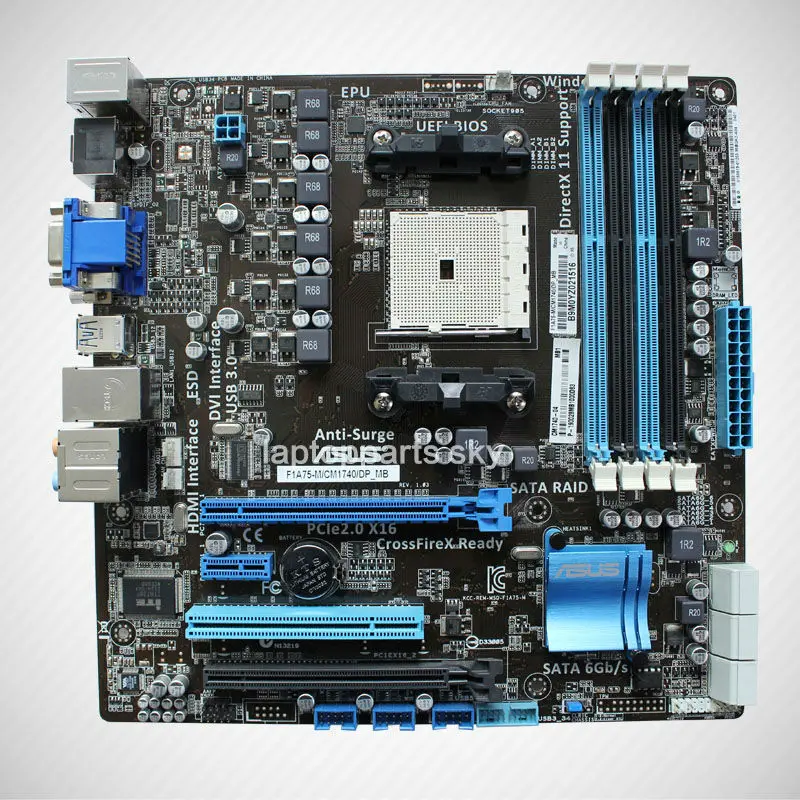 57″ x 1.57″ / 4cm x 4cm 57″ x 1.57″ / 4cm x 4cm |
| Weight | 1.4oz / 39g |
| Introduction date | August 8, 2011 |
| Price at introduction | $109 |
| Architecture / Microarchitecture | |
| Microarchitecture | K10 |
| Platform | Lynx |
| Processor core ? | Llano |
| Core stepping ? | LN-B0 |
| CPUID | 300F10 |
| Manufacturing process | 0.032 micron 1178 million transistors |
| Die size | 227mm2 |
| Data width | 64 bit |
| The number of CPU cores | 4 |
| The number of threads | 4 |
| Floating Point Unit | Integrated |
| Level 1 cache size ? | 4 x 64 KB 2-way set associative instruction caches 4 x 64 KB 2-way set associative data caches |
| Level 2 cache size ? | 4 x 1 MB 16-way set associative caches |
| Level 3 cache size | None |
| Multiprocessing | Uniprocessor |
| Features |
|
| Low power features | PowerNow! |
| Integrated peripherals / components | |
| Integrated graphics | GPU Type: Radeon HD 6530D Shader cores: 320 Base frequency (MHz): 443 |
| Memory controller | The number of controllers: 1 Memory channels: 2 Supported memory: DDR3-1866 Maximum memory bandwidth (GB/s): 29.  9 9 |
| Other peripherals |
|
| Electrical / Thermal parameters | |
| V core ? | 0.45V – 1.4125V |
| Maximum operating temperature ? | 70.5°C |
| Thermal Design Power ? | 65 Watt |
CONDITION: PULLED
WARRANTY: 90 DAY
amd%20socket%20fm1%20pinout datasheet & applicatoin notes
Top Results (1)
| Part | ECAD Model | Manufacturer | Description | Datasheet Download | Buy Part |
|---|---|---|---|---|---|
| DC648A |
Analog Devices Inc |
3-Phase, Buck Controllers for AMD CPUs |
amd%20socket%20fm1%20pinout Datasheets Context Search
| Catalog Datasheet | MFG & Type | Document Tags | |
|---|---|---|---|
2011 — E4690
Abstract: GET56NGBB22GVE GDDR5 phy AMD Athlon 64 X2 dual 4800 pin out E6460 E6760 TEN54LSDV23GME 100-CG2293 6970M RADEON e2400 |
Original |
|
43838Q E4690 GET56NGBB22GVE GDDR5 phy AMD Athlon 64 X2 dual 4800 pin out E6460 E6760 TEN54LSDV23GME 100-CG2293 6970M RADEON e2400 |
2000 — TSC 13003
Abstract: circuit diagrams retu 3. |
Original |
|
0030h 0035h) 0002h, 0003h, 0004h. 0035h. TSC 13003 circuit diagrams retu 3.02 transistor EN 13003 A transistor EN 13003 H vid 13003 amd duron 1600 datasheet AMD xp datasheet amd duron 1100 AMD ATHLON 2400 AMD Athlon XP 2000 |
2001 — 35×35 bga
Abstract: 8259 Programmable Peripheral Interface 8259 programmable interval timer AMD-760TM AMD-766 AMD-762 AMD-760 Athlon MP datasheet Athlon 64 amd766 |
Original |
|
AMD-760 December-2001 AMD-768TM AMD-760TM 8254-based) 492-pin 26×26 35×35 35×35 bga 8259 Programmable Peripheral Interface 8259 programmable interval timer AMD-766 AMD-762 Athlon MP datasheet Athlon 64 amd766 |
CA324E
Abstract: BUF03FJ CA3290E CA3130T Am29F400BT-120EC AMP01EX CA339E B512F-2T B512F-2 CA3524E |
Original |
|
AM28F512-70JC AT-41435 BAV99 CA3262E AM29D010-70JC BAV99LT1 CA3280E AM29F002NT-120EC B32K130 BAW56 CA324E BUF03FJ CA3290E CA3130T Am29F400BT-120EC AMP01EX CA339E B512F-2T B512F-2 CA3524E |
AM25LS2521PC
Abstract: ADV478KP50E AM27S19/BEA bra 94 4753 AM26LS31/BEA AM27S13A am2902apc AM27S27DC AM25LS2521PCB |
OCR Scan |
|
7a0034S ADV476KP4QE AM25S09DC AM27S19SA/BEA ADV476KP50E AM25S09PC AM27S19SA/BFA ADV476KP68 AM25S10DC AM27S21 AM25LS2521PC ADV478KP50E AM27S19/BEA bra 94 4753 AM26LS31/BEA AM27S13A am2902apc AM27S27DC AM25LS2521PCB |
2003 — AMD-8111
Abstract: Southbridge |
Original |
|
AMD-8111 AMD-8111TM Southbridge |
2002 — AMD xp datasheet
Abstract: AMD Athlon 64 pin diagram pentium4 instruction set AMD Athlon 64 athlon xp powernow ATHLON XP amd athlon datasheet Athlon 64 Thoroughbred athlon amd Athlon xp mobile |
Original |
|
|
2001 — amd motherboard
Abstract: southbridge AMD ATHLON 64 X 2 AMD-766 AMD-762 AMD-760 Athlon MP datasheet Athlon 64 AMD-760TM AMD BGA |
Original |
|
AMD-760TM 24229C October-2001 8259-based) 8254-based) 272-pin AMD-766TM amd motherboard southbridge AMD ATHLON 64 X 2 AMD-766 AMD-762 AMD-760 Athlon MP datasheet Athlon 64 AMD BGA |
1999 — Athlon
Abstract: AMD Athlon 64 athlon 64 motherboard design «AMD Processors» cache athlon 64 Athlon 64 datasheet Athlon 64 AMD athlon core datasheet amd athlon processor diagram |
Original |
|
|
ATI Radeon
Abstract: ATI Radeon X1250 ATI RS690 AMD 690g AMD690G 690G amd northbridge chipset RS690 X1250 RADEON x1250 |
Original |
|
|
2002 — NORTHBRIDGE FUNCTION IN DESKTOP MOTHERBOARD
Abstract: AMD-768 AMD-762TM AMD Athlon 64 pin diagram PC2100 pin diagram AMD Athlon 64 AMD-762 AMD-760 AMD-760TM AMD Athlon 64 |
Original |
|
AMD-760TM 5787A AMD-760, AMD-762, AMD-768 NORTHBRIDGE FUNCTION IN DESKTOP MOTHERBOARD AMD-762TM AMD Athlon 64 pin diagram PC2100 pin diagram AMD Athlon 64 AMD-762 AMD-760 AMD Athlon 64 |
2003 — AMD Thermal Design Guide
Abstract: AMD Processor Power and Thermal OSA244CCO5AH OPTERON 2200 OSA244CEP5AL AMD 940 Pin Package amd Power and Thermal AMD Athlon 64 and amd opteron OSA144CCO5AG OSA142CCO5AG |
Original |
|
|
2011 — E4690
Abstract: AMD Phenom II x4 E6760 ati radeon bga Phenom II x4 965 amd RADEON e6760 TW3X4G1333C9A AMD Phenom II AMD Athlon II X4 athlon 64 x2 |
Original |
|
E6760 1920×1200, 32bpp, 3DMark03 20GHZ, 110405n, 64bit 100-CG2266 E4690 AMD Phenom II x4 ati radeon bga Phenom II x4 965 amd RADEON e6760 TW3X4G1333C9A AMD Phenom II AMD Athlon II X4 athlon 64 x2 |
2001 — AMD datecode marking CODE
Abstract: AMD-762 AMD-762JLC AMD-766 AMD marking CODE amd part «marking» marking agp |
Original |
|
AMD-762 AMD-762 AMD-762TM AMD-766TM AMD datecode marking CODE AMD-762JLC AMD-766 AMD marking CODE amd part «marking» marking agp |
2002 — sis 735
Abstract: SiS 7012 K7S5A soundmax integrated digital audio ecs k7s5a intel desktop board d845wn intel desktop board d845wn data sheet i815E Duron d845wn |
Original |
|
|
2004 — amd athlon 64 3200 754 pin
Abstract: AMD Processor Power and Thermal cache «athlon 64» AMD FX Processor amd athlon 2800 amd athlon 64 3200 AMD Family 12h AMD Athlon 64 2800 amd athlon 64 3000 amd athlon 64 3000 754 pin |
Original |
|
0001h 0042h. amd athlon 64 3200 754 pin AMD Processor Power and Thermal cache «athlon 64» AMD FX Processor amd athlon 2800 amd athlon 64 3200 AMD Family 12h AMD Athlon 64 2800 amd athlon 64 3000 amd athlon 64 3000 754 pin |
Previous
1
2
3
…
23
24
25
Next
GA-A75M-D2H, FM1, AMD® A75, DDR3-1866 16GB /2, PCIe x16 /1+1*, SATA 6 Gb/s RAID 10 /6, VGA+DVI+HDMI, USB 3.
 0 /4, HDA, GbLAN, mATX, Retail
0 /4, HDA, GbLAN, mATX, Retail
GA-A75M-D2H (rev. 1.0)
AMD A75 chipset Chipset
Features:
- Supports Socket FM1 of 32nm AMD A-series/E2-series processors
- Enhanced AMD Radeon HD 65xx/64xx/63xx graphics (DX11) integrated with the processor
- 2 PCI-E 2.0 interfaces with AMD Dual Graphics and CrossFireX technology support
- Ultra Durable 2 Classic Technology with 4+1 phase power VRM designed
- Supports 4 USB 3.0 interfaces with superfast transfer rates of up to 5Gbps
- Supports 6 SATA3 storage interfaces with superfast 6Gbps link speed and RAID 0,1,10
- GIGABYTE 3x USB Power with On/Off Charge USB ports
- Integrated HDMI/Dual-link DVI/D-sub outputs for high resolution up to 2560×1600 Full HD playback
- Hi-def 108dB Signal-to-noise ratio Blu-ray DVD audio playback
- Patented DualBIOS with Hybrid EFI technology for 3TB HDD support
Overview:
GIGABYTE Super4™ motherboards are the latest range of next-generation desktop motherboards based on the AMD A75 chipset, supporting a new generation socket FM1 of 32nm AMD A-series APUs with DirectX11 graphics integrated.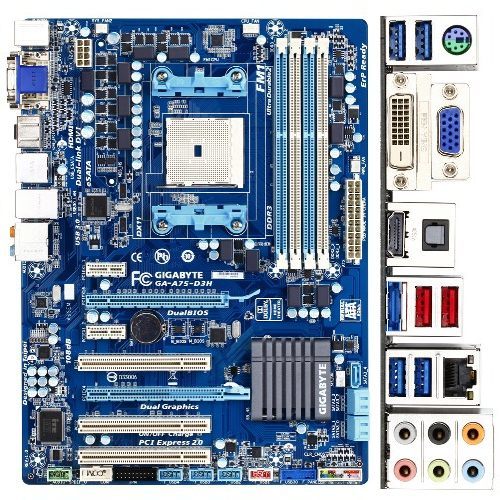 Not only delivering AMD’s industry-leading performance and advanced graphics capabilities, GIGABYTE Super4™ motherboards are equipped with a comprehensive range of unique features that offer mainstream PC users the most compelling platform on the market today.
Not only delivering AMD’s industry-leading performance and advanced graphics capabilities, GIGABYTE Super4™ motherboards are equipped with a comprehensive range of unique features that offer mainstream PC users the most compelling platform on the market today.
AMD Dual Graphics: Unrivalled Upgradability
The AMD A75 series platform showcases AMD Dual Graphics technology, allowing users to further boost 3D graphics performance by adding an additional discrete AMD Radeon™ HD 6000 series graphics card to the system. This unique Dual Graphics technology means users can enjoy higher frame rates on the latest gaming titles, utilizing the processing power of both discrete and integrated graphics processors.
AMD Fusion Graphics: Most Powerful Integrated Graphics Ever
Supporting Microsoft® DirectX® 11, OpenGL 4.1 and OpenCL 1.1 standards, AMD Fusion graphics deliver 3DMark Vantage (Performance setting) scores of over 6000 points, and a 3D gaming experience similar to entry-level discrete graphics card solutions.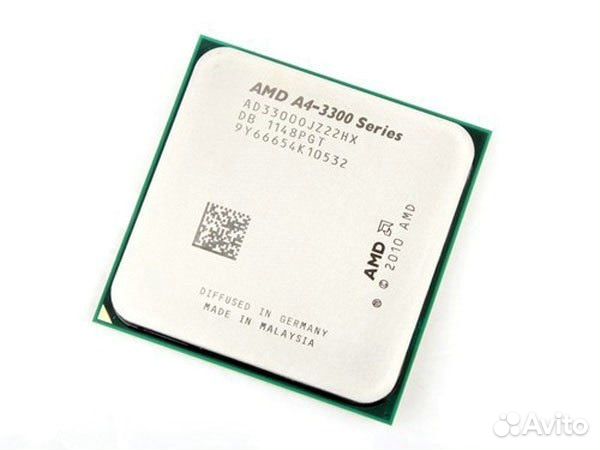
* 6000+ marks in 3DMarkVanatge Performance mode was achieved by overclocking.
* DVI/HDMI/Display Port video outputs recommended for overclocked APU configurations.
* Please be aware that GIGABYTE’s product warranty does not cover damages caused by overclocking.
Multi-display support with AMD CrossFireX
Flexible graphics capabilities — Up to 2 VGA cards are supported for 2 way AMD CrossFireX™ (running at x16, x4 bandwidth), delivering the ultimate in graphics performance for gaming enthusiasts who demand the highest frame rates without compromising on resolution.
Dual-link DVI port
Designed to leverage the awesome potential of the latest AMD Fusion A-series APUs, GIGABYTE A75 series motherboards deliver an enhanced visual experience that includes advanced DX11® gaming, incredibly smooth HD multimedia playback and support for high resolution displays of up to 2560 x 1600 pixels by Dual-link DVI port.
Note: When Dual-link DVI enabled, the remaining display output ports will be disabled.
GIGABYTE Super4™
Super Safe
All GIGABYTE Super4™ motherboards boast specific features that guard against system malfunction and ensure extended system longevity, including GIGABYTE DualBIOS™ to ensure that you never experience system failure due to BIOS corruption. Additionally, each USB port has its own dedicated power fuse that prevents unwanted USB port failure, helping to safe guard your important data during transfer. All Super4™ motherboards also use Solid Capacitors design that guarantee system longevity with a minimum 50,000 hrs lifespan.
DualBIOS™ 3TB+ HDD Support (Hybrid EFI Technology)
Hybrid EFI Technology combines the benefits of GIGABYTE’s mature BIOS platform including stability and compatibility with 3rd party products with 3TB+ HDD support from EFI technology, allowing GIGABYTE to offer the best of both worlds through a quick and easy BIOS update using GIGABYTE’s @BIOS utility that is freely available from the GIGABYTE website.
GIGABYTE DualBIOS™ is a patented technology that automatically recovers BIOS data when the main BIOS has crashed or failed. Featuring 2 physical BIOS ROMs integrated onboard, GIGABYTE DualBIOS™ allows quick and seamless recovery from BIOS damage or failure due to viruses or improper BIOS updating. In addition, GIGABYTE DualBIOS™ now supports 3TB+ (terabyte) hard drive booting without the need for partitioning, and enables more data storage on a single hard drive.
One Port One Fuse
- Each USB port has its own dedicated power fuse
- Prevents unwanted USB port failure
- Safe guards important data during transfer
50,000 Hours Japanese Solid Capacitors
GIGABYTE Ultra Durable motherboards are equipped with solid capacitors developed by leading Japanese manufacturers. With an average lifespan of 50,000 hours, these solid capacitors provide the stability, reliability and longevity essential to meet the power needs of high-end processors and other components running today’s most demanding applications and games.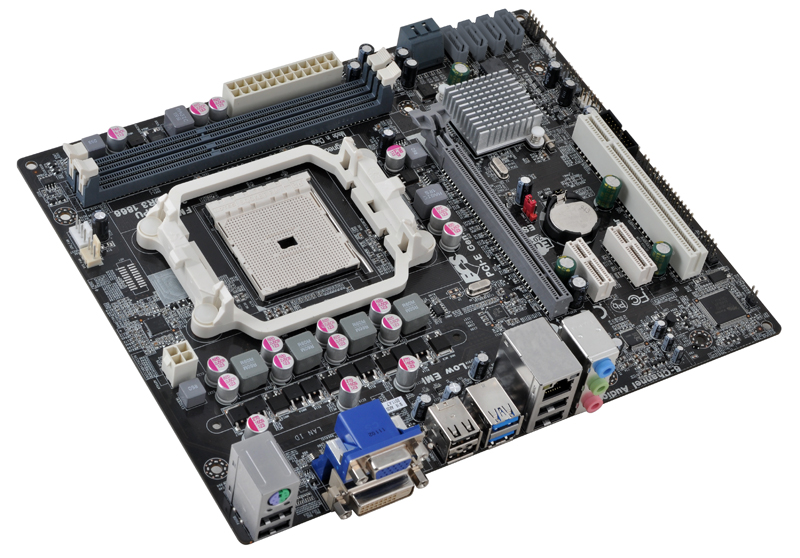
* 50000 hours of work time is calculated at 85℃ ambient temperature.
Super Speed
GIGABYTE Super Speed ensures that you’re always on the cusp of PC performance, data transfer and device charging speeds. GIGABYTE’s unique Ultra Durable™ series technology makes sure that your AMD processor is running at optimal performance levels, while GIGABYTE 3x USB power means better device compatibility and also allows iPad, iPhone and iPod devices to charge up to 40% faster. AMD A-series motherboards come with new generation APU able to provide ultimate DX11 graphics performance and additional up to 45% enhanced by AMD Dual Graphics technology.
Ultra Durable 2 — Classic
GIGABYTE was the first motherboard manufacturer to realize the importance of using only the highest quality components for the critically important CPU VRM zone of the motherboard which is responsible for delivering stable power to the CPU. The GIGABYTE Ultra Durable™ 2 Classic design utilizes Solid Capacitors manufactured in Japan which are rated to last for at least 50,000 hours in operational use and also Lower RDS(on) MOSFETs which feature lower resistance, i.e. reduced power consumption and heat.
The GIGABYTE Ultra Durable™ 2 Classic design utilizes Solid Capacitors manufactured in Japan which are rated to last for at least 50,000 hours in operational use and also Lower RDS(on) MOSFETs which feature lower resistance, i.e. reduced power consumption and heat.
3x USB Power Boost
GIGABYTE motherboards feature a 3x USB power boost, delivering greater compatibility and extra power for USB devices. GIGABYTE’s unique USB power design is also able to efficiently regulate output over the full voltage range, which greatly enhances USB device compatibility. In addition, dedicated lower resistance fuses ensure lower voltage drops, and provide more stable and plentiful power delivery.
On/Off Charge Technology
GIGABYTE On/Off Charge technology allows you to charge your iPhone, iPad and iPod Touch regardless of whether your PC is on, in standby mode or even off. A derivative of GIGABYTE’s highly acclaimed 3x USB Power feature, On/Off Charge enables devices to draw more current from GIGABYTE motherboard USB ports than standard USB ports allow, so that charging from your PC can be as fast as with a charger.
Note: Due to certain mobile phone limitations, users may need to connect the mobile phone to their PC before the PC enters S4/S5 mode to enable a quick charge from non On/Off Charge USB ports. Charging results may vary by model.
Super Savings
All GIGABYTE Super4™ motherboards are equipped with the very best quality components that ensure that you PC is running at maximum power efficiency. Lower RDS(on) MOSFETs reduce energy wastage through unnecessary residual heat dissipation. This all amounts to tangible energy savings which are beneficial for both end-users and the environment without impacting system performance.
- Lower RDS(on) MOSFETs
- Lower CPU Zone Temperature
- High Power-Efficiency
Super Sound
As the HD multimedia revolution continues to gain momentum, so too must hardware standards in audio quality. All GIGABYTE Super4™ motherboards offer excellent 7.1 surround sound audio backed by a proprietary converter that is able to achieve 108dB noise ratio (SNR) playback quality. This means that users will enjoy a better audio experience with lower levels of noise and hiss when enjoying the latest HD content.
All GIGABYTE Super4™ motherboards offer excellent 7.1 surround sound audio backed by a proprietary converter that is able to achieve 108dB noise ratio (SNR) playback quality. This means that users will enjoy a better audio experience with lower levels of noise and hiss when enjoying the latest HD content.
108dB Signal-to-Noise ratio playback
GIGABYTE strongly believes that in 2011, HD audio playback is a standard specification, and as such, we have made Blu-ray audio playback a standard for all of our motherboards.
All of GIGABYTE’s 2011 motherboards feature higher capability audio solution with 108dB Signal-to-Noise ratio (SNR) playback quality to deliver high-performance, multi-channel HD audio. SNR is a comparison of the amount of signal to the amount of noise such as hiss present in the signal (expressed in Decibels). A higher SNR equals a better audio experience. For example, 108dB, is a high audio specification, as this means the audio signal is 108dB higher than the level of the noise.
Native 4 ports USB 3.0 support by A75 Chipset
With superfast transfer rates of up to 5 Gbps, users are able to experience a theoretical 10x improvement over USB 2.0. Also, backwards compatibility with USB 2.0 assures users of long term use of their legacy USB 2.0 devices.
* USB 3.0 10x performance is a maximum theoretical value. Actual performance may vary by system configuration.
Native 6 ports SATA3 support by A75 Chipset
AMD A75 chipset supports native 6 ports of high-speed SATA3 , delivering superfast 6Gbps link speeds for twice the data transfer rates of SATA2 3 Gbps with RAID 0, 1, 10 support. When used in RAID 0 (Stripe) mode, GIGABYTE A75 motherboards offer even faster data transfer rates of up to 4x the speed of current SATA interfaces.
* SATA3 RAID 0 4x and SATA3 2x performance are maximum theoretical values. Actual performance may vary by system configuration.
HDMI Interface
HDMI is latest High-Definition Multimedia Interface, which is able to provide up to 5Gb/s video transmitting bandwidth and also 8-channel high quality audio. Via transmitting uncompressed digital data, HDMI is able to reduce signal interference as transferring between digital and analog signal, seen and heard, direct from the source. In addition, HDMI is compatible with HDCP (High-bandwidth Digital Content Protection), which allowing playback of Blu-ray/ HD DVD and other protected contents.
AutoGreen- Greening your PC via Bluetooth cellphone
AutoGreen technology can automatically save power by simply putting your PC in a state of sleep when your Bluetooth® cell phone is out of range of your computer.
Note: GIGABYTE motherboards do not include a Bluetooth® receiver; the addition of a 3rd party Bluetooth receiver is required.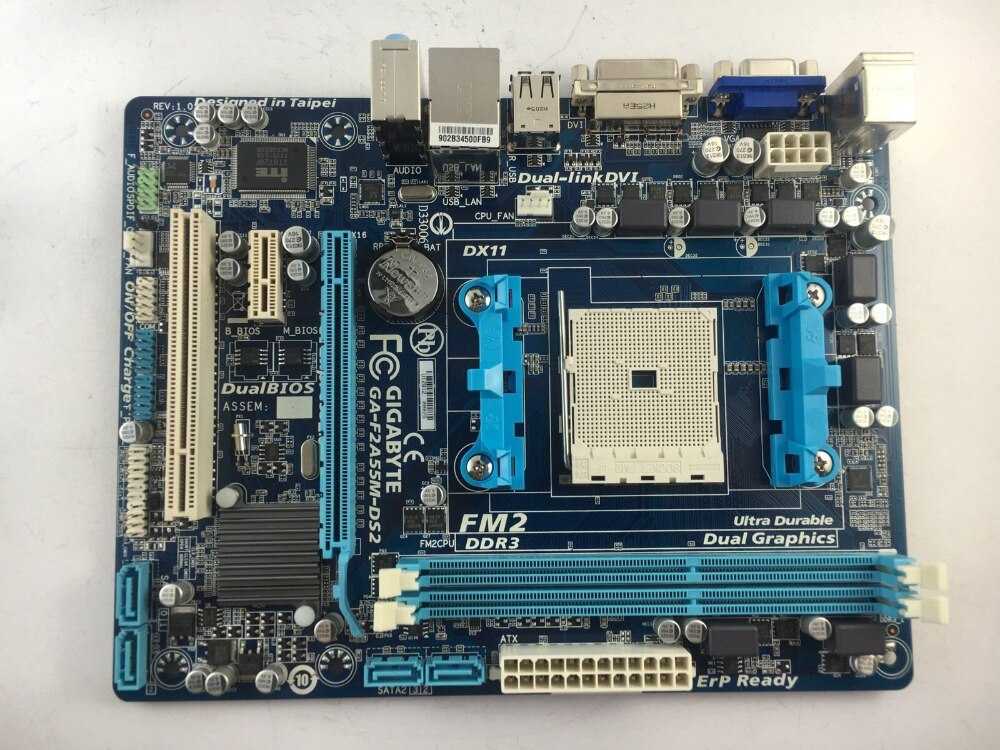
EasyTune6
GIGABYTE has completely redesigned EasyTune6 from the ground up to make it easier than ever to manage and monitor your hardware resources as well as tweak your system settings in order to achieve maximum system performance. Whether you are an overclocking enthusiast, or a computer novice, EasyTune6 provides the tools you need to quickly and effortlessly fine tune your system.
ErP Lot 6 support
The ErP (also known as Energy-Related Products Directive) is part of the European Union’s environmental regulations policy. It is based on concern for the environmental as the proliferation of electronic devices continues, and how to improve energy efficiency for a better and greener life. GIGABYTE supports ErP and produces motherboards that help you effectively improve system efficiency.
Specifications:
| APU | FM1 Socket:
|
| Chipset |
|
| Memory |
|
| Onboard Graphics | APU:
|
| Audio |
|
| LAN |
|
| Expansion Slots |
|
| Multi-Graphics Technology |
|
| Storage Interface | Chipset:
|
| USB | Chipset:
|
| Internal I/O Connectors |
|
| Back Panel Connectors |
|
| I/O Controller |
|
| H/W Monitoring |
|
| BIOS |
|
| Unique Features |
|
| Bundle Software |
|
| Operating System |
|
| Form Factor |
|
| Note | (Note 1) Due to Windows 32-bit operating system limitation, when more than 4 GB of physical memory is installed, the actual memory size displayed will be less than 4 GB.
(Note 2) The DVI-D port does not support D-Sub connection by adapter. (Note 3) The resolution of 2560×1600 is supported only when Dual Link DVI mode is enabled. (Note 4) To configure 7.1-channel audio, you have to use an HD front panel audio module and enable the multi-channel audio feature through the audio driver. (Note 5) For optimum performance, if only one PCI Express graphics card is to be installed, be sure to install it in the PCIEX16 slot. (Note 6) Whether the APU/system fan speed control function is supported will depend on the APU/system cooler you install. (Note 7) Available functions in EasyTune may differ by motherboard model. |
| Remark |
|
* The entire materials provided herein are for reference only. GIGABYTE reserves the right to modify or revise the content at anytime without prior notice.
* Advertised performance is based on maximum theoretical interface values from respective Chipset vendors or organization who defined the interface specification. Actual performance may vary by system configuration.
* All trademarks and logos are the properties of their respective holders.
* Due to standard PC architecture, a certain amount of memory is reserved for system usage and therefore the actual memory size is less than the stated amount.
FM-Series Sockets (FM1, FM2 & FM2+) Cooler & Chips
- Partition Wizard
- Partition Manager
- FM2+ CPU: FM-Series Sockets (FM1, FM2 & FM2+) Cooler & Chips
By Helen | Follow |
Last Updated
Derived from AMD FM2+ CPU, this article describes related contents about socket FM2+, FM2 and FM1, together with their available chipsets and coolers.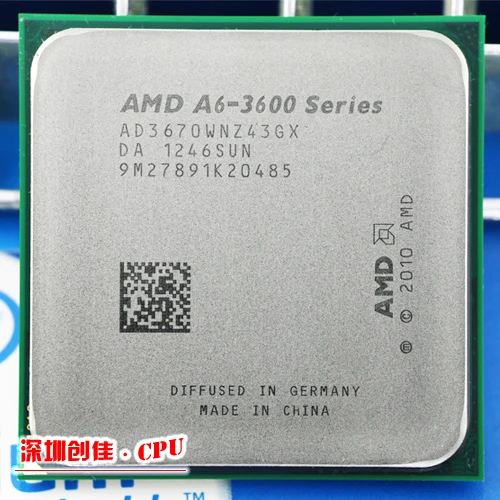 To dig further, the MiniTool partition manager site can help.
To dig further, the MiniTool partition manager site can help.
FM2+ CPU Overview
FM2+ CPU refers to central processing units (CPUs) that are compatible with AMD FM2+ Socket.
Socket FM2+, also known as FM2b or FM2r2, is a type of CPU socket designed by CPU manufacturer AMD for its desktop “Kaveri” APUs (Accelerated Processing Unit) and Godavari APUs (both are Steamroller-based) for connecting the motherboard. This kind of mainboard can also be called an FM2+ motherboard.
There are three PCIe cores on Socket FM2+, two 5 x8 cores and one 2 x16 cores. There are also eight configurable ports that can be sorted into two groups as below:
- GPP group – Includes 5 General Purpose Ports (GPP) and 1 x4 UMI (Unified Media Interface).
- Gfx group – Includes 2 x8 slots with each port can be limited to lower link widths for programs requiring fewer lanes. Also, the 2 slots can be combined into one X16 link.
All those PCI-E links can support PCIe 2. x data rate. Moreover, the Gfx group links can support the PCI-e 3.x data rate.
x data rate. Moreover, the Gfx group links can support the PCI-e 3.x data rate.
FM2 vs FM2+
Compared with its predecessor FM2, FM2+ has 906 pin contacts and its 2 pins more. Therefore, FM2+ APUs (“Kaveri”) aren’t compatible with Socket FM2 motherboards. Yet, FM2 processors/APUs like “Trinity” and “Richland” are compatible with the FM2+ socket.
What Is Socket FM1?
FM1 Socket, launched in July 2011, is a kind of processor socket or slot for a desktop motherboard using AMD early A-series APUs (“Llano”) and Llano-derived Athlon II processors. It is directly replaced by Socket FM2.
About FM2 Socket
FM2 Socket CPU
Socket FM2, released on Sep. 27, 2012, is a CPU slot to connect AMD Trinity and Richland APUs as well as Athlon X2 & Athlon X4 to the motherboard. Motherboards that feature at the time new FM2 CPU socket also adopt AMD’S new A85X chipset.
FM2 Socket is very similar to Socket FM1; they are both based on a 31×31 grid of pins with a 5×7 central void, 3 pins missing from 4 corners and a few other key pins missing.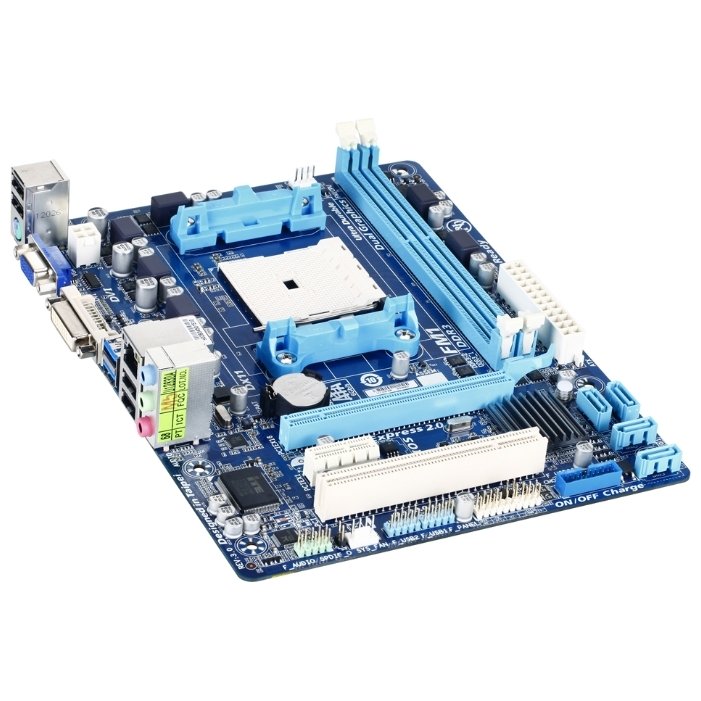 Compared with the FM1 socket, 2 key pins were moved and 1 more is removed, leaving the final 904 pins.
Compared with the FM1 socket, 2 key pins were moved and 1 more is removed, leaving the final 904 pins.
FM1 vs FM2 vs FM2+
Here is a table comparing some basic parameters between socket FM1 and FM2.
| Socket | Type | Chip form factors | Pins/contacts | FSB protocol | Processors | Predecessor | Successor |
| FM1 | PGA-ZIF | PGA | 905 | UMI | Early A-series APUs | — | FM2 |
| FM2 | PGA-ZIF | PGA | 904 | UMI |
|
FM1 | FM2+ |
| FM2+ | µPGA-ZIF | PGA | 906 | UMI/ports |
|
FM2 | — |
FM2+ CPU Cooler
The heatsinks for these AMD’s sockets, including socket FM2, socket AM2, socket AM2+, socket AM3 and socket AM3+, are the same. The four holes for fastening the heat sink to the motherboard are placed in a rectangle with lateral lengths of 48×96 mm. So, cooling solutions for those sockets can be interchangeable.
The four holes for fastening the heat sink to the motherboard are placed in a rectangle with lateral lengths of 48×96 mm. So, cooling solutions for those sockets can be interchangeable.
Available Chipsets for FM-series Sockets
Generally, the chipsets that are compatible with FM-series sockets are Fusion Controller Hubs (FCHs). Before 2017, from 2011 to 2016, only APUs use FCHs. In 2017, AMD implements FCHs into their products alongside the launch of the Zen architecture. Those products are called FCHs chipsets and they include the below models:
- A55T
- A50M
- A60M
- A68M
- A70M
- A76M
- A45
- A55
- A58
- A68H
- A75
- A78
- A85X
- A88X
- A55E
- A77E
About The Author
User Comments :
AMD processors for the FM1 platform
Historical study of the company’s first integrated platform
Methodology for testing computer systems
of the 2016 model
As experience shows, articles devoted to testing «old» (by the standards of the computer market) systems are usually no less popular than reviews of «hot» new products. And no wonder: even when their owners are no longer satisfied with the current level of performance, it is still interesting to compare it with the demonstrated new computers — at least in order to understand what is worth switching to (and whether it is worth it). Of course, it is impossible to test absolutely everything released by manufacturers in at least the last five years, but some iconic processors are quite. Especially when they are interesting in themselves as stages in the development of the industry or allow us to draw conclusions about some other products. In particular, that is why we decided (since the opportunity arose) to repeat one test of the year before last, but using modern software. Yes, yes, we will again talk about the AMD FM1 platform.
And no wonder: even when their owners are no longer satisfied with the current level of performance, it is still interesting to compare it with the demonstrated new computers — at least in order to understand what is worth switching to (and whether it is worth it). Of course, it is impossible to test absolutely everything released by manufacturers in at least the last five years, but some iconic processors are quite. Especially when they are interesting in themselves as stages in the development of the industry or allow us to draw conclusions about some other products. In particular, that is why we decided (since the opportunity arose) to repeat one test of the year before last, but using modern software. Yes, yes, we will again talk about the AMD FM1 platform.
Why return to it? First, despite its short life, it was, one might say, a turning point in the development of the market: this is the first platform whose integrated graphics were not implemented on the principle of «what was», but really suitable for (albeit limited) gaming or «non-graphic computing». In 2011, this was fresh and relevant — we recall that the then Intel proposals supported technologies already existing in discrete GPUs only very limitedly. AMD, on the other hand, has implemented full functionality and performance at the level of junior discrete graphics cards of the same year, and not some distant past. Actually, even later, performance competition continued to remain only intra-company — especially if we consider the budget segment, in which FM1 could fully replace only FM2, and later FM2 +, but not the updated LGA1155 or LGA1150. Last year, however, processors with a more powerful GPU were released for the latter than in any AMD APUs, but they are significantly more expensive. And what about the budget processors for the latest LGA1151? Something is possible, but for this it is desirable to compare the solutions of both companies directly and on an equal footing.
In 2011, this was fresh and relevant — we recall that the then Intel proposals supported technologies already existing in discrete GPUs only very limitedly. AMD, on the other hand, has implemented full functionality and performance at the level of junior discrete graphics cards of the same year, and not some distant past. Actually, even later, performance competition continued to remain only intra-company — especially if we consider the budget segment, in which FM1 could fully replace only FM2, and later FM2 +, but not the updated LGA1155 or LGA1150. Last year, however, processors with a more powerful GPU were released for the latter than in any AMD APUs, but they are significantly more expensive. And what about the budget processors for the latest LGA1151? Something is possible, but for this it is desirable to compare the solutions of both companies directly and on an equal footing.
The processor component of the first AMD APUs is also interesting in its own way, albeit archaic: it goes back to the 2009 Athlon II. Despite their venerable age, such processors are still used by many, so they are also worth testing. But it’s not really necessary to do so. As earlier tests showed, the performance of the A4-3400 roughly corresponds to the younger Athlon II X2 215/220, while the analog of the A8-3870K is the older processors on the same chip, already sold under the Phenom II X4 840/850 brand. Moreover, the correspondence in this case is almost complete: the same number of cores similar in microarchitecture (and, accordingly, in supported technologies) allows us to expect that even when the software changes, the processors will still behave in a similar way. So, having tested the two mentioned processors for FM1, we will get an estimate of the performance range of budget processors for AM3. And accurate enough. And Intel processors for the LGA775 platform also fall into the same range — somewhere from Pentium E5x00 to Core 2 Quad Q9500. Here the comparison, of course, is already more rough, but also worthy of attention.
Despite their venerable age, such processors are still used by many, so they are also worth testing. But it’s not really necessary to do so. As earlier tests showed, the performance of the A4-3400 roughly corresponds to the younger Athlon II X2 215/220, while the analog of the A8-3870K is the older processors on the same chip, already sold under the Phenom II X4 840/850 brand. Moreover, the correspondence in this case is almost complete: the same number of cores similar in microarchitecture (and, accordingly, in supported technologies) allows us to expect that even when the software changes, the processors will still behave in a similar way. So, having tested the two mentioned processors for FM1, we will get an estimate of the performance range of budget processors for AM3. And accurate enough. And Intel processors for the LGA775 platform also fall into the same range — somewhere from Pentium E5x00 to Core 2 Quad Q9500. Here the comparison, of course, is already more rough, but also worthy of attention.
In general, no matter how you look at it, it’s worth spending some time on the very first generation of AMD APUs. Today we will deal with this.
Configuration of test stands
| Processor | A4-3400 | AMD A6-3500 | A8-3870K | LLANA NACK NACK NACKS0022 | Llano | Kaveri | |||||||||||||||||||||||||||||||||||||||||||||||||||||||||||||||||||||||||||||||||||||||||||||||||||||||||||||||||||
| Technology pr-va | 32 nm | 32 nm | 28 nm | ||||||||||||||||||||||||||||||||||||||||||||||||||||||||||||||||||||||||||||||||||||||||||||||||||||||||||||||||||||||
| 3.0 | 3.3/3.8 | ||||||||||||||||||||||||||||||||||||||||||||||||||||||||||||||||||||||||||||||||||||||||||||||||||||||||||||||||||||||||
| Number of computation cores (modules)/threads | 2/2 | 3/3 | 2 2/4 | ||||||||||||||||||||||||||||||||||||||||||||||||||||||||||||||||||||||||||||||||||||||||||||||||||||||||||||||||||||||
| L1 cache (total), I/D, KB | 128/128 | 192/192 | 256/256 | 192/64 | |||||||||||||||||||||||||||||||||||||||||||||||||||||||||||||||||||||||||||||||||||||||||||||||||||||||||||||||||||||
| cache L2, KB | 2 × 512 | 3 × 1024 | 4 × 1024 | 2 × 2048 | L. | — | — | — | — | ||||||||||||||||||||||||||||||||||||||||||||||||||||||||||||||||||||||||||||||||||||||||||||||||||||||||||||||||
| RAM | 2 × DDR3-1600 | 2 × DDR3-1866 | 2 × DDRA TDP, W | 65 | 65 | 100
For the above reasons, we are most interested in two processors, but we will test three (since there are already), adding the A6-3500 to the list of test subjects. First of all, we will compare this trio with the A8-7650K: this is a much more modern and serious solution from the company, but the slowest of the newer generations of processors we tested. Over time, we plan, if possible, to test cheaper offers for FM2 + (fortunately, this platform still retains good positions in this segment), but so far there are none — we will limit ourselves to an assessment from above: the old A8 versus the new one. |
2/2 | 2/2 | |||||||||||||||||||||||||||||||||||||||||||||||||||||||||||||||||||||||||||||||||||||||||||||||||||||||||||||||||
| cache L1, I/D, KB | 64/64 | 64/64 | 64/64 | ||||||||||||||||||||||||||||||||||||||||||||||||||||||||||||||||||||||||||||||||||||||||||||||||||||||||||||||||||||||
| KASH L2, KB | 2 × 256 | 2 × 256 | 2 × 256 | ||||||||||||||||||||||||||||||||||||||||||||||||||||||||||||||||||||||||||||||||||||||||||||||||||||||||||||||||||||||
| cache L3, MIB | 2 | 3 | |||||||||||||||||||||||||||||||||||||||||||||||||||||||||||||||||||||||||||||||||||||||||||||||||||||||||||||||||||||||
| 2 × DDR3-1600/9000 2 × 2133 | 2×DDR3-1333 | 2×DDR3-1600 / 2×DDR4-2133 |
|||||||||||||||||||||||||||||||||||||||||||||||||||||||||||||||||||||||||||||||||||||||||||||||||||||||||||||||||||||||
Already a familiar picture: the Celeron G39x0 lags behind even the younger old A6, the Pentium G32x0 still loses to the no less ancient A4, the G4500T struggles with all this, at the very least A8-7650K rises menacingly 🙂
Is it possible, in general, to consider FM1 a gaming platform as of today? No, of course not. Actually, even FM2+ is only conditionally suitable for this role — we have always adhered and continue to adhere to the opinion that if games are one of the intended purposes when purchasing a computer, a discrete video card has no alternative. But you can play some games (if lock ) play on IGP too. From the point of view of today’s article, the most important thing is that to this day this five-year-old platform, in general, is not inferior to modern low-end Intel solutions. More precisely, Pentium and Core i3 with HDG 530 GPU are no worse than the older A8 for FM1, but all models up to HDG 510 inclusive (and the old “numberless ones”) at best reach the level of the younger A6. And then A4. That is, the backlog at one time was very good, which is not surprising — after all, even the A4-3400 has a built-in full analog of the Radeon HD 6450, which is still de facto sold under the name Radeon R5 230. The built-in Radeon 6550D in older A8s is closer to video cards of a slightly different level — about the Radeon HD 5570. In general, in those years such discrete video cards were in demand, but here is an integrated solution. Which looks pale against the background of the new proposals of AMD itself, but after all, how many years have passed. And Intel processors are reaching this level only now, i.e., almost five years after the appearance of the FM1 platform, or about six years, if you count from the company’s first GPUs integrated «under the cover» of the processor (albeit on a separate chip).
More precisely, Pentium and Core i3 with HDG 530 GPU are no worse than the older A8 for FM1, but all models up to HDG 510 inclusive (and the old “numberless ones”) at best reach the level of the younger A6. And then A4. That is, the backlog at one time was very good, which is not surprising — after all, even the A4-3400 has a built-in full analog of the Radeon HD 6450, which is still de facto sold under the name Radeon R5 230. The built-in Radeon 6550D in older A8s is closer to video cards of a slightly different level — about the Radeon HD 5570. In general, in those years such discrete video cards were in demand, but here is an integrated solution. Which looks pale against the background of the new proposals of AMD itself, but after all, how many years have passed. And Intel processors are reaching this level only now, i.e., almost five years after the appearance of the FM1 platform, or about six years, if you count from the company’s first GPUs integrated «under the cover» of the processor (albeit on a separate chip).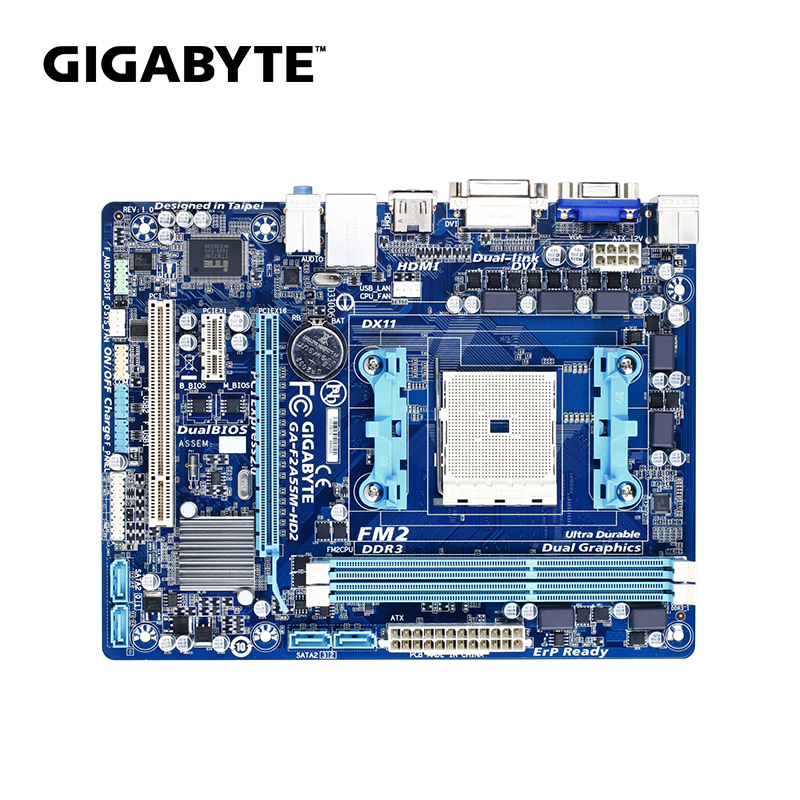
Total
The first thing that should be noted in the conclusions is that we did not encounter any problems during testing, despite using the latest version of Windows and a modern set of programs. Yes, of course, video drivers for old «APUs» are already available only through Windows Update, but they are installed, and everything works fine — as in the case of Intel’s Ivy Bridge (but with Sandy Bridge of the same 2011 as FM1, already there are some rough edges).
And in terms of hardware configuration, everything is also simple: completely standard (so far) DDR3 memory, conventional drives with SATA600 interface, built-in USB 3.0 support, and PCI and PCIe buses are used for expansion cards — there have been no significant changes on the market . The latter, by the way, allows you to «spur» the gaming performance a little if necessary, simply by adding a discrete graphics card. Of course, it makes no sense to set the expensive one, since the performance of solutions for this platform is still low — the expensive one will not be fully used.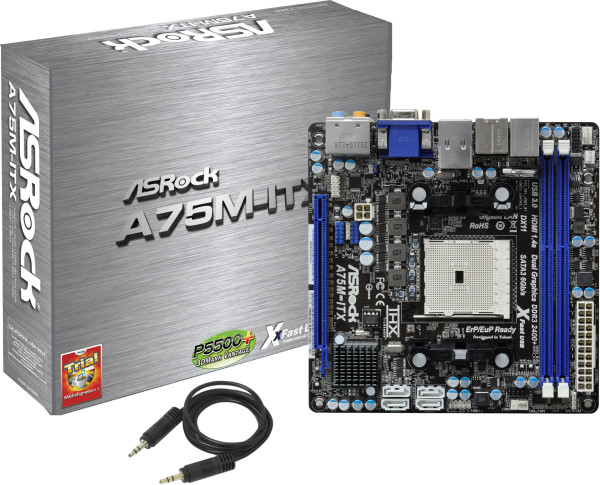
To be fair, if we had tried this experiment in 2011, but with the 2006 system, we would have basically succeeded, too. Problems could arise with memory (due to the transition from DDR2 to DDR3 that occurred at the end of the 2000s), but not with other peripherals. But with a computer of 2001 in 2006, everything would be very difficult … AGP for video cards, Parallel ATA for drives, already exotic SDRAM or RDRAM memory — why go far: in 2006, we used the x64 version of Windows for testing XP (and after all, Vista came out at the end of the year), and the first processors suitable for its operation appeared only in 2003. In general, just about 2005-2006. processes in the market were quite turbulent. After — one and a half changes in the type of memory (transition from DDR2 to DDR3 and the ongoing process of implementing DDR4), and leapfrog of processor sockets. Other interfaces have evolved already evolutionarily and with the preservation of compatibility. The software more or less stabilized in its requests, which grew only quantitatively (which, taking into account the compatibility of interfaces, was solved), but not qualitatively. And in some areas — no quantitative changes were observed: the computer on which it was possible to install and comfortably use Vista does not cope well with the «top ten».
And in some areas — no quantitative changes were observed: the computer on which it was possible to install and comfortably use Vista does not cope well with the «top ten».
In general, it is not surprising that systems from five or even ten years ago are still in operation. Interestingly, the performance of processors from 2006 to 2011 grew faster than from 2011 to 2016, so the point, in general, is far from it (despite crying and groans about this in various forums and others like them). It is clear that all those processors are already either slow or very slow — a lot depends on the year. In particular, if we return to our today’s heroine, the AMD FM1 platform, then in 2006 it would have been a top one (this is, of course, a hypothetical comparison, but according to earlier tests, processors for FM1 just correspond to the level of the best Core 2 Duo / Quad, and their video part is worthy of comparison with good discrete video cards of that time), in 2011 it was budgetary and already only conditionally gaming, but today .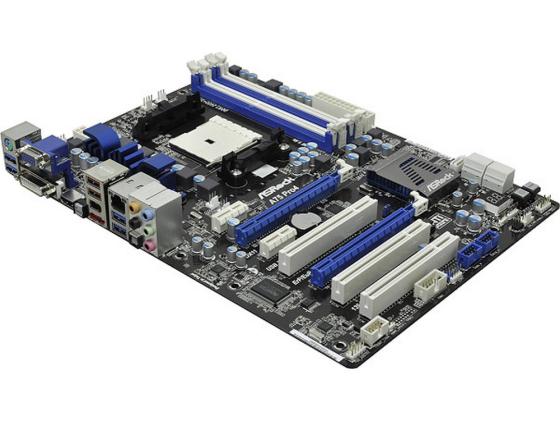 .. you saw it yourself 🙂 However, all investments in themselves such systems have long been beaten off, so what if the performance «does not press» — then why fix something that didn’t break ? If something really breaks and / or ceases to suit for other reasons, then when buying a new computer, you can no longer worry about the choice. As you can see, even the integrated graphics of Intel processors have already pulled up to this level, and the new AMD “APUs” are even faster. In terms of processor performance, both of them also “grew up” — albeit to varying degrees, but still. Thus, whatever you buy to replace the old system with FM1 will be at least as good, but at the same time cheaper. And if you are not limited to the cheapest offers, then definitely better. In general, you can not think about what was, but just buy what you need — as if there was no computer at all. Good news, in general.
.. you saw it yourself 🙂 However, all investments in themselves such systems have long been beaten off, so what if the performance «does not press» — then why fix something that didn’t break ? If something really breaks and / or ceases to suit for other reasons, then when buying a new computer, you can no longer worry about the choice. As you can see, even the integrated graphics of Intel processors have already pulled up to this level, and the new AMD “APUs” are even faster. In terms of processor performance, both of them also “grew up” — albeit to varying degrees, but still. Thus, whatever you buy to replace the old system with FM1 will be at least as good, but at the same time cheaper. And if you are not limited to the cheapest offers, then definitely better. In general, you can not think about what was, but just buy what you need — as if there was no computer at all. Good news, in general.
List-table of AMD Socket FM1 processors
Skip to content
- Description
- Reviews (0)
The Fusion microarchitecture processor family along with Socket FM1 was introduced by AMD in 2011. These are the first so-called hybrid CPUs in the history of Advanced Micro Devices, combining the computing and graphics (GPU) cores. Models with an integrated GPU do not require a separate video card, and the image output in this case occurs through the VGA connector located on the motherboard. In 2012, it was replaced by AMD Socket FM2.
These are the first so-called hybrid CPUs in the history of Advanced Micro Devices, combining the computing and graphics (GPU) cores. Models with an integrated GPU do not require a separate video card, and the image output in this case occurs through the VGA connector located on the motherboard. In 2012, it was replaced by AMD Socket FM2.
CPUMark — processor performance rating in points. It can be used to roughly compare the capabilities of different models. The rating is the same for all generations of AMD and Intel processors.
| Model | Process family | Cores/Threads | Frequency/Turbo | Cache_L2/3 CPUMark | Memory | Video core | TDW Price |
| A8-3870k | Llano (32nm) | 4/4 | 3.0Ghz/— | 4Mb/— 2345 | DDR3 1866 | HD6550D | 100W from 1250r |
| A8-3850 | Llano (32nm) | 4/4 | 2. 9Ghz/— 9Ghz/— |
4Mb/— 2124 | DDR3 1866 | HD6550D | 100W from 1900r |
| A6-3670k | Llano (32nm) | 4/4 | 2.7Ghz/— | 4Mb/— 2040 | DDR3 1866 | HD6530D | 100W ot770r |
| A6-3650 | Llano (32nm) | 4/4 | 2.6Ghz/— | 4Mb/— 2030 | DDR3 1866 | HD6530D | 100W from 770r |
| Athlon II X4 651K | Llano (32nm) | 4/4 | 3.0Ghz/— | 4Mb/— 2338 | DDR3 1866 | —- | 100W from 900r |
| Athlon II X4 641 | Llano (32nm) | 4/4 | 2.8Ghz/— | 4Mb/— 2143 | DDR3 1866 | —- | 100W ot770r |
| Athlon II X4 638 | Llano (32nm) | 4/4 | 2. 7Ghz/— 7Ghz/— |
4Mb/— 2026 | DDR3 1866 | —- | 100W from 1200r |
| Athlon II X4 631 | Llano (32nm) | 4/4 | 2.6Ghz/— | 4Mb/— 2072 | DDR3 1866 | —- | 100W from 550r |
| A6-3500 | Llano (32nm) | 3/3 | 2.1Ghz/— | 3Mb/— 1382 | DDR3 1866 | HD6530D | 65W ot600r |
| A4-3400 | Llano (32nm) | 2/2 | 2.7Ghz/— | 1Mb/— 1031 | DDR3 1600 | HD6410D | 65W ot600r |
| A4-3300 | Llano (32nm) | 2/2 | 2.5Ghz/— | 1Mb/— 961 | DDR3 1600 | HD6410D | 65W ot570r |
| Athlon II X2 221 | Llano (32nm) | 2/2 | 2. 6Ghz/— 6Ghz/— |
1Mb/— —- | DDR3 1600 | —- | 65W |
| Sempron X2 198 | Llano (32nm) | 2/2 | 2.5Ghz/- | 1Mb/— 930 | DDR3 1600 | HD6410D | 65W from 1100r |
| E2-3200 | Llano (32nm) | 2/2 | 2.4Ghz/— | 1Mb/— 971 | DDR3 1600 | HD6370D | 65W from 900r |
Compatible motherboards:
AMD Llano series processors are compatible with motherboards equipped with Socket FM1(905 pin), built on chipsets (logic sets) AMD A45, AMD A50, AMD A55, AMD A60, AMD A68, AMD A70, AMD A75, AMD A85.
History of the Socket FM1 platform
In 2006, Advanced Micro Devices acquired the then-independent GPU manufacturer, ATI Technologies, a Canadian company. For some time after the acquisition, AMD allows the new asset to exist autonomously, to create and manufacture GPUs under the same brand. But in 2010, everything changes: the ATI logo disappears and the new Canadian video cards are called AMD Radeon. Moreover, the new owner of the GPU developer is placing an order to create a video chip that could be integrated into the CPU. The order was successfully executed and a year later the family of AMD Fusion processors was born, which received an individual socket FM1 (PGA 905).
But in 2010, everything changes: the ATI logo disappears and the new Canadian video cards are called AMD Radeon. Moreover, the new owner of the GPU developer is placing an order to create a video chip that could be integrated into the CPU. The order was successfully executed and a year later the family of AMD Fusion processors was born, which received an individual socket FM1 (PGA 905).
Under the cover of the new CPUs, two crystals were placed on a single textolite substrate at once — computing and graphics, such processors were called «hybrid» (or APU). After moving the GPU to the chip, the FM1 platform no longer needed to place the integrated graphics core on the motherboard, which greatly simplified the component structure. The processors themselves, which received the abbreviation Llano, were equipped with fairly powerful Radeon HD 6 ** 0D GPUs. This allowed you to run games without a discrete graphics card. The only requirement for the high-quality work of the graphics core of hybrid CPUs was the availability of fast RAM.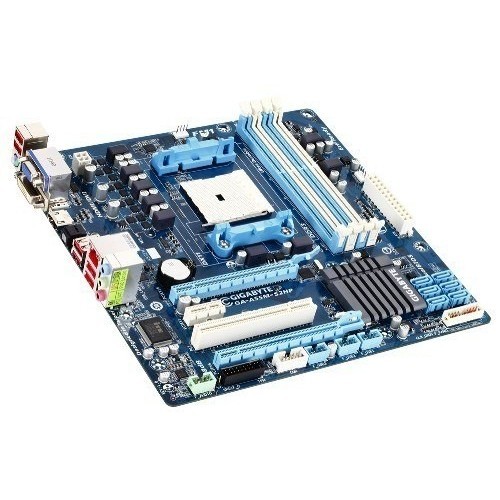 This was due to the fact that the GPU took the required amount of video memory from RAM, and the speed of the entire graphics subsystem depends on the throughput of the latter. Understanding this, AMD introduced for all FM1 processors support for a very fast RAM at that time — DDR3 1600-1800 MHz.
This was due to the fact that the GPU took the required amount of video memory from RAM, and the speed of the entire graphics subsystem depends on the throughput of the latter. Understanding this, AMD introduced for all FM1 processors support for a very fast RAM at that time — DDR3 1600-1800 MHz.
The success of AMD Fusion APUs played an important role in the fate of the company — the manufacturer: the developments made it possible to create more powerful APUs, which became the basis for the PlayStation 4 and Xbox One consoles. In addition, subsequent families of CPUs with integrated graphics released for sockets FM2 and FM2 + provided AMD with a long-term profit influx at a time when the company was on the verge of ruin (2014-2016).
Socket-FM1 processors in Ukraine. Prices for Socket-FM1 Processors at Prom.ua
operates
AMD A8-3800 CPU 2.4-2.7GHZ/4M/65W SOKKET FM1 Processor for PC AD3800OJZ43GX
in stock
Delivery in Ukraine
499 UAH
9000 2. 5-2.8GHZ/4M/65W SOCKET FM1 Processor for PC AD3820OJZ43GX
5-2.8GHZ/4M/65W SOCKET FM1 Processor for PC AD3820OJZ43GX
In stock
Delivery in Ukraine
499 UAH
works
AMD A6-5400B CPU AD540BOKA23HAM/1M5GZ/1M5GZ FM2 Processor for PC 9Ol000
Buy
works
AMD Athlon X4 760K AD760KWOA44HL 3.8-4.1GHZ/4M/100W SOKKET FM2 Processor for PC
Delivery from Kyiv
439 UAH
9000 641,(2800 mhz) s.FM1 socket
Delivery from Nikopol
220 UAH
Buy
NIKA-Tech
CPU AMD A6 7480 Box Socket FM2+ AD7480ACABOX for a computer (K/OPT1_3432-9689)
9000)
Delivery in Ukraine
3 247 UAH
2 577 UAH
Buy
Dream ON SHOP
works
MATION MSI MSI MSI-7748 VER.1.1 Micro ATX SOCKET FM1+processor A8-3800
Delivery from Dnepr
1 400 UAH
Buy
FORTSERG1 9000
Buy
Alpha Power online store
Working
Processor AMD Athlon II X4 641 2.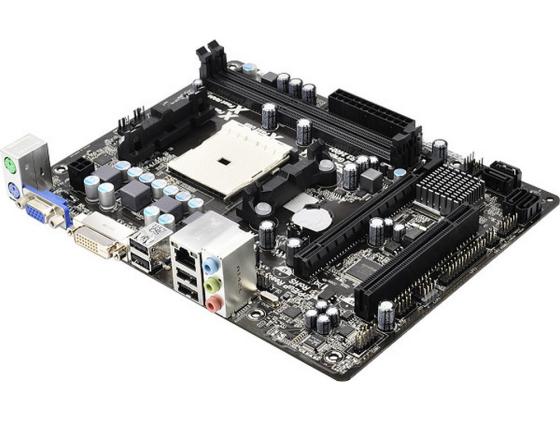 8GHz Socket FM1
8GHz Socket FM1
Delivery from Kyiv
300 UAH
online store Buy 900 Power0003
operates
AMD A4-3420 APU / 2.8GHZ / AD3420OJZ22HX / / SOKKET FM1 65W
Delivery in Ukraine
220 UAH
Buy
Alpha Power
operates
Processor AMD A8-0004 APU / 2.4Ghz / AD3800OJZ43GX / / SOKKET FM1 65W
Delivery from Kyiv
550 UAH
Buy
Alpha Power
CPE
A8-3820 APU / 2.5GHZ / ADAZ4GZ / / AD Socket FM1 65W 9Ol000 210 hryvnia
Buy
fortserg1
Works
GameMax Gamma 500 Blue processor cooling
Delivery across Ukraine
0003
See also
works
Air cooling Gamemax GAMMA 500 RGB
Delivery in Ukraine
1 144 UAH
Buy
online store «COMPX»
works
set of mat. Asus Prime B250M-A Socket 1151*4 x DDR4 *MicroATX+Intel Core i5-7400 processor
Delivery from Dnipro
-2.4GHz/4M/65W Socket FM1 PC Processor AD3600OJZ43GX
Delivery from Kyiv
399 UAH
Buy
works
AMD A8-7600 SOKKET FM2 PLUS 3. 1 GHz 4-core
1 GHz 4-core
Delivery from Dnepr
840 UAH
Buy
9000 FORTSERG1 9000
Works
Processor cooler ZALMAN CNPS10 X Performa + Socket 2011,1366,1156/55/51/50,775,FM1/2,AM3/3+,AM2/2+ (code
Delivery across Ukraine
UAH 2 042
Buy
Internet hypermarket «Tviy Dim»
works
AMD A6-6400B CPU 3.9-4.1GHZ/1m/65W SOKKET FM2 Processor for PC AD640BOKA23HL
Delivery from Kyiv
649 UAH
works
9000 GHZ Socket FM1
Delivery from Kyiv
400 UAH
Buy
Alpha Power
004 Delivery from Kyiv
699 UAH
Buy
works
AMD Athlon II X4 641 CPU AD641XWNZ43GX/4M/100W SOKKET FM1 Processor for PC
Delivery from Kyiv
9000 9000 9000 9000 9000
operates
AMD A8-3850 APU / 2.9GHZ / AD3850WNZ43GX / SOKKET FM1
Delivery from Kyiv
600 UAH
Buy
online store Alpha Power
works
9000 9000 9000
004 CPU AMD A6 7480 Box Socket FM2+ AD7480ACABOX for desktop PC
in warehouse
Delivery in Ukraine
2 324 UAH
2 112 UAH
Factoria — Personal Technology
9000 9000 7480 Box Socket FM2+ AD7480ACABBOX for computer
In stock in Kyiv
Delivery across Ukraine
2 037 — 2 513 UAH
from 10 sellers
2 324 UAH
2 112 UAH
Buy
Lihtar UA
works
AMD Athlon II X4 638 CPU AD638XOJZ43GX/4M/65W SOCKET FM1 Processor for PC
Delivery
270 GRN
works
Intel Core i5-4200M 3. 4GHZ SR1HA HASWELLLLL SOKKET G3 / RPGA946B, RPGA947
4GHZ SR1HA HASWELLLLL SOKKET G3 / RPGA946B, RPGA947
in warehouse
Delivery in Ukraine
UAH
Buy
MAKMP
0000 AMD Socket FM1 processors in Komsomolsk-on-Amur: 48-items: free shipping [link]
Affiliate programHelp
Komsomolsk-on-Amur
Catalog
Catalog of goods
Building materials
Building materials
Textiles and leather
Textiles and leather
Health and beauty
Health and beauty
Children’s goods
Children’s goods
products and drinks
products and drinks
Electrical engineering
Electrical engineers
House and garden
House and garden
Agriculture
Agriculture
Industry 9000
All Categories0005 Socket /AM4/AM2+/AM3/AM3+/ FM1 /FM2/FM2+/AM2, 80mm, 2800rpm, 22dB, 65W, 4-pin PWM, Al
IN STOREMore prices and similar products
3
234 630
Processor AMD EPYC 7601 SP3 LGA, 32 x 2200 MHz 2200 MHz, Naples, x86-64 support, SSE2,
MORE DETAILSMore prices and similar items
Processor AMD Sempron 2650 AM1, 2 x 1450 MHz 1450 MHz, Kabini, technology support X86-64, SSE2, S
9,000 9,000 9,000 9,000 9,000 9,000 9,000 9,000 9,000 9,000 9,000 9,000 9,000 9,55 More
Compare AMD FM1 and FM2 sockets
The socket, as you know, is a socket on the motherboard for installing the central processor. Sockets vary in form factor, number of pins, and attachment type. The use of sockets, in principle, is intended to facilitate system upgrades by simply changing the processor. However, the problem is that the release of almost every new processor from AMD or Intel is associated with a transition to a new platform, that is, with the advent of a new socket.
This is clearly seen, in particular, on the example of the latest sockets FM1 and FM2, designed to connect powerful AMD hybrid processors.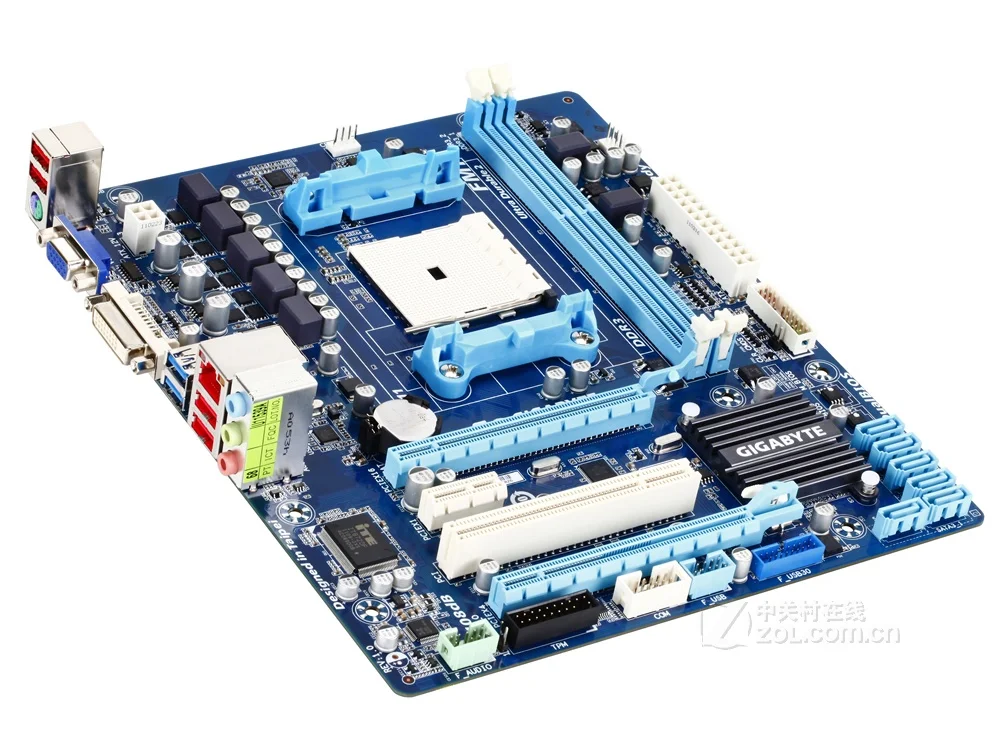 The FM1 platform was developed for Llano processors, which were released not so long ago — in mid-2011. However, when developing processors of the new Komodo and Trinity family, AMD decided to abandon the use of the FM1 socket in favor of the new FM2 platform. In this short article, we will try to figure out what this threatens users with and whether there are significant design differences between the FM1 and FM2 socket.
The FM1 platform was developed for Llano processors, which were released not so long ago — in mid-2011. However, when developing processors of the new Komodo and Trinity family, AMD decided to abandon the use of the FM1 socket in favor of the new FM2 platform. In this short article, we will try to figure out what this threatens users with and whether there are significant design differences between the FM1 and FM2 socket.
FM1 and FM2 platforms
The FM1 socket is a 905-pin processor socket. It was developed specifically for AMD Fusion APUs. First of all, we are talking about Liano hybrid processors, which, due to the presence of an integrated graphics core, required not only a new design. AMD’s Liano processors were introduced in dual or quad-core variants with support for Direct X 11 GPUs and DDR3 1600 RAM. All motherboards that came out with a Socket FM1 socket for installing Liano processors adopted the UEFI system instead of the traditional BIOS. In the desktop segment, Liano processors and, accordingly, the FM1 platform debuted on June 30, 2011.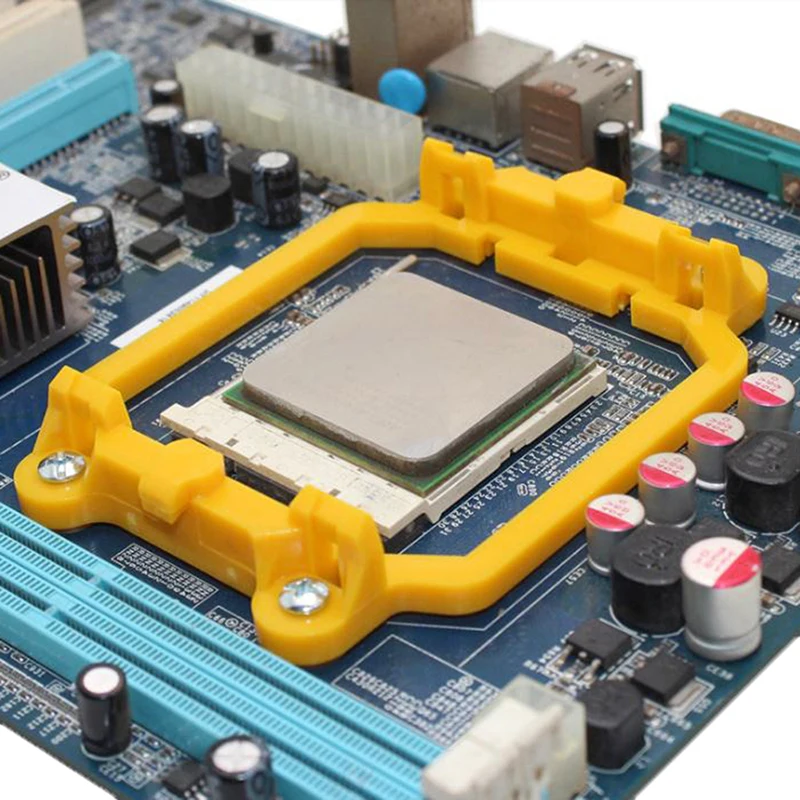
It seemed that the next generation of AMD APUs would also be in Socket FM1. However, the appearance of AMD Llano processors on the market was ambiguously assessed by computer enthusiasts and overclockers, for whom, in fact, the new product was designed. Although the powerful integrated graphics core provided a good level of performance, comparable to the work of junior discrete video cards, however, the Liano processors did not bring the expected increase in frequency potential. And if AMD Llano solutions were quite competitive in the mobile segment, their popularity turned out to be low in desktop systems.
AMD has decided to bet on a new generation of Trinity APUs with more powerful graphics and computing cores. Building a faster desktop processor required abandoning the existing FM1 platform. This is how the FM2 socket appeared, which structurally differs from FM1 in a slightly different arrangement of contacts.
AMD’s new Trinity processors are based on the improved Piledriver architecture and feature powerful integrated graphics.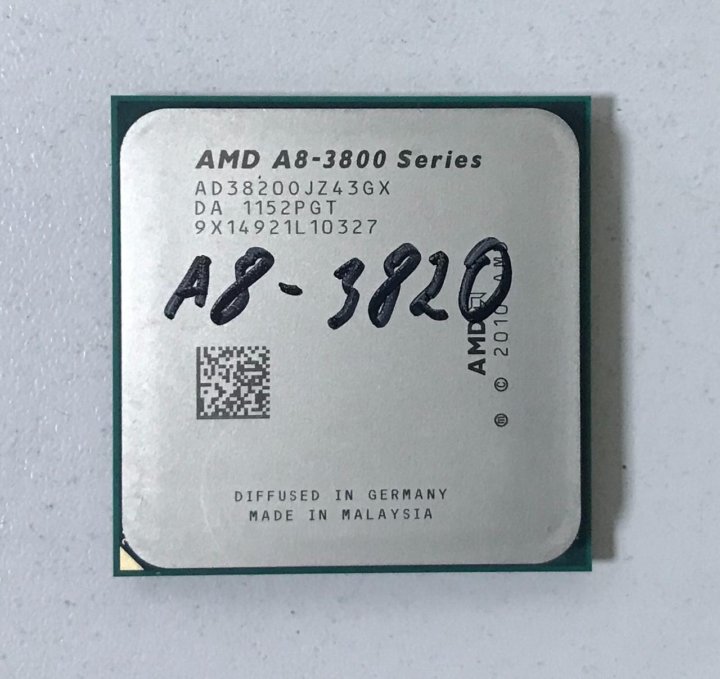 They have a dual-channel DDR3 memory controller with support for operation in modes up to DDR3 1866. One of the main differences between Trinity chips and their predecessor Liano processors is higher clock speeds. If Liano processors managed to get close to the 3 GHz mark, then the older Trinity models can already be overclocked to the mark of 3.8 GHz — 4.2 GHz.
They have a dual-channel DDR3 memory controller with support for operation in modes up to DDR3 1866. One of the main differences between Trinity chips and their predecessor Liano processors is higher clock speeds. If Liano processors managed to get close to the 3 GHz mark, then the older Trinity models can already be overclocked to the mark of 3.8 GHz — 4.2 GHz.
Despite the fact that the older Trinity models have slightly fewer shader units than Llano, this is more than offset by the use of VLIW4 multiprocessor units, acceleration of the tessellation processing unit and a higher clock frequency. The integrated graphics core Trinity has full support for DirectX 11 with ShaderModel 5.0, OpenCL 1.1 and DirectCompute 11. Solutions based on the FM1 socket, by the way, did not provide the ability to use two graphics adapters in the system at once. The new FM2 platform with Trinity processors is aimed at a wide range of users who are interested in building fairly powerful multimedia desktop PCs.
Differences and compatibility between FM1 and FM2 sockets
In general, the FM2 socket is a logical continuation of the FM1 platform, so the differences between the two sockets were not too significant. On closer examination, you can see that even in appearance, the FM2 socket has not undergone radical changes compared to the previous platform. However, these changes still exist. Although the pin layout of both sockets looks similar, the FM2 is missing one of the pins in the center. Thus, if the processor socket FM1 had 905 contacts, the new platform has only 904.
In addition, the so-called «keys», that is, areas without contacts, for Llano and Trinity processors are located in different places on the substrate. Unfortunately, a different location of the «keys» will not even allow you to install the AMDTrinity processor in the old FM1 socket. Some other subtle changes to the FM2 socket have to do with power delivery.
AMD representatives have for a long time given rather evasive answers to the question of whether the FM1 and FM2 platforms will eventually be compatible. This was done, probably, in order not to indirectly reduce the demand for processors with socket FM1. But today it is already known that the new AMD hybrid processors have neither forward nor backward compatibility with the FM1 platform.
This means that desktop users with AMD Liano processors will need to purchase socket FM2 motherboards to upgrade to the latest Trinity processors. This incompatibility is understandable, because the new AMD processors are based on a completely different architecture, which required a transition to other power subsystems. This circumstance forced AMD to switch to the new Socket FM2 platform. However, owners of desktop PCs with the FM1 platform are unlikely to be satisfied with this decision.
The Future of FM1 and FM2 Sockets
AMD is renowned not only for its performance and cost-effectiveness, but also for its commitment to maintaining the same design across multiple generations of its processors. This provided users with the ability to easily and quickly upgrade their PC by purchasing and installing a new processor. Thus, the frequent socket change policy has never been AMD’s hallmark. That is why the rejection of the FM1 platform actually gave rise to a lot of dissatisfaction among a serious part of AMD product supporters.
With the advent of the new FM2 platform, the company’s management de facto recognized Llano hybrid processors and their accompanying motherboards with the FM1 socket as a «dead end» solution. It is clear that the platform of the previous generation with the lack of the possibility of an upgrade is unlikely to have any success with users. It can be assumed that the FM1 socket, which was released, it would seem, not so long ago, will wait for a short life on the market.
As AMD claims, everything will be different with the FM2 platform. This processor socket will not become «single serial», as happened with FM1, but will be focused on supporting several future generations of AMD processors. However, given the not very pleasant history with the release of first-generation APUs, potential consumers may have concerns and questions to AMD about whether the FM2 platform is really serious and for a long time.

 02 transistor EN 13003 A transistor EN 13003 H vid 13003 amd duron 1600 datasheet AMD xp datasheet amd duron 1100 AMD ATHLON 2400 AMD Athlon XP 2000
02 transistor EN 13003 A transistor EN 13003 H vid 13003 amd duron 1600 datasheet AMD xp datasheet amd duron 1100 AMD ATHLON 2400 AMD Athlon XP 2000 )
) If you want to change to another graphics port when the computer is on, be sure to turn off the computer first.)
If you want to change to another graphics port when the computer is on, be sure to turn off the computer first.) 0 standard.)
0 standard.) 0/2.0 ports (2 ports on the back panel, 2 ports available through the internal USB header)
0/2.0 ports (2 ports on the back panel, 2 ports available through the internal USB header) 0/1.1 ports
0/1.1 ports 0a, DMI 2.0, SM BIOS 2.4, ACPI 1.0b
0a, DMI 2.0, SM BIOS 2.4, ACPI 1.0b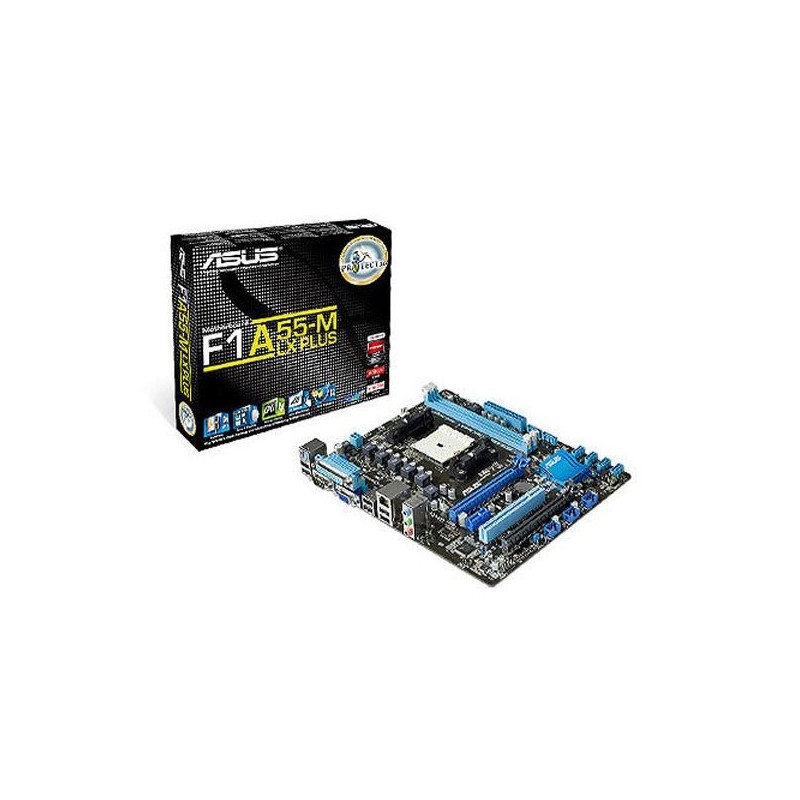 4cm x 22.5cm
4cm x 22.5cm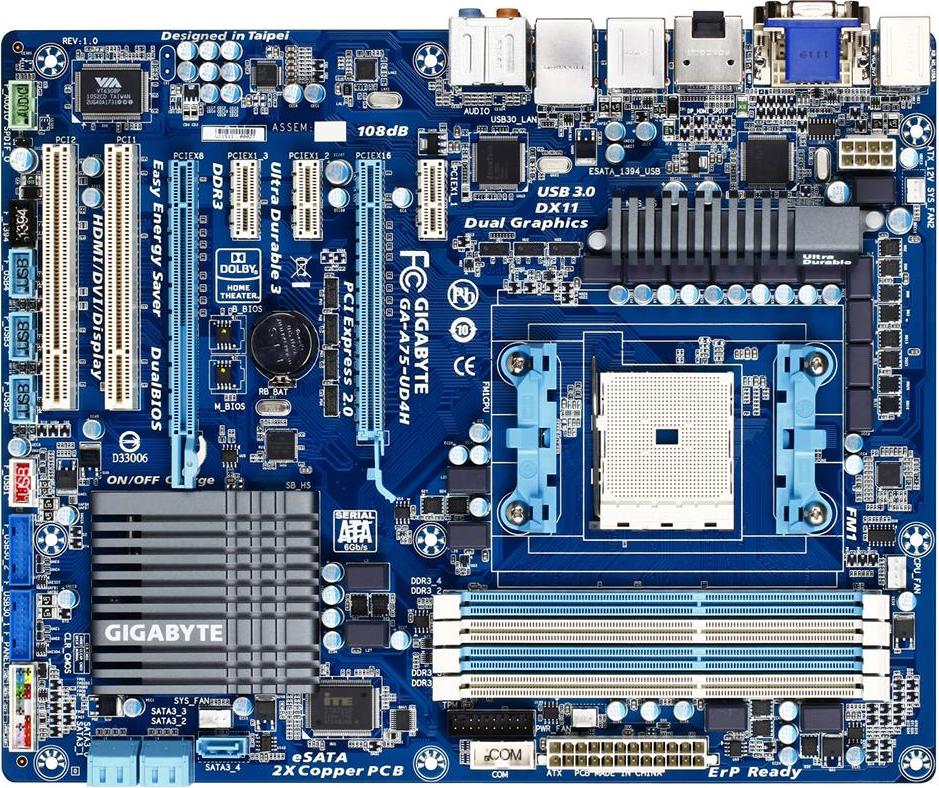
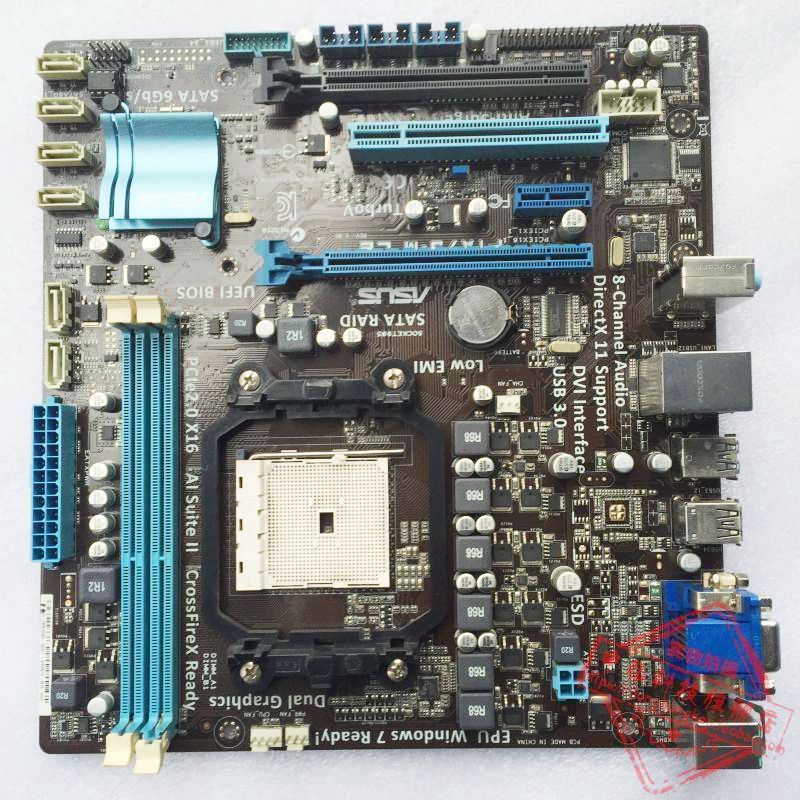 Also interesting in its own way, since it occupied a special position in the model line: a three-core (the only one of all) with a good (if not the best) GPU, TDP 65 W and massively available (unlike exotic quad-cores for this platform with such a heat pack). And again, in terms of gaming performance, is at least some 9We need 0191 A6, but there are no others.
Also interesting in its own way, since it occupied a special position in the model line: a three-core (the only one of all) with a good (if not the best) GPU, TDP 65 W and massively available (unlike exotic quad-cores for this platform with such a heat pack). And again, in terms of gaming performance, is at least some 9We need 0191 A6, but there are no others. 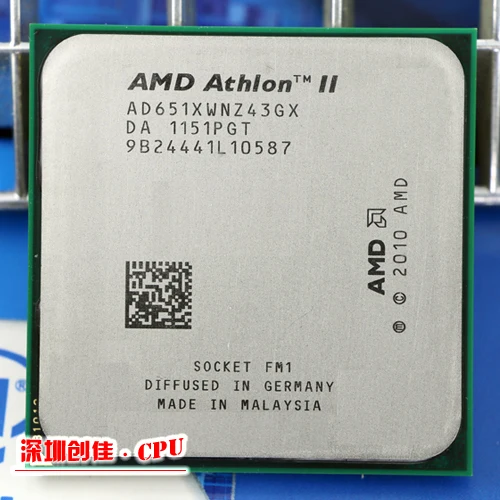 Here we briefly recall that it is based on the following four pillars:
Here we briefly recall that it is based on the following four pillars:  The successes of the rest of the subjects, of course, are much more modest. And the most noteworthy is that the A4-3400 is already about twice as slow as the Celeron G3900. What’s wrong here? Both processors are banal dual-core models without any SMT technologies and operate at almost the same frequency, but they differ by half. So just counting the cores says nothing about performance even in a multi-threaded environment: the level of old dual-core devices (recall that the A4-3400 is also comparable to Athlon II X2 or Celeron/Pentium for LGA775) is about half that of modern ones. But we haven’t taken the oldest model yet — the first representatives of this class (such as Athlon 64 X2 or Pentium D) are even slower. And the first quad-core processors only roughly correspond to modern dual-core ones, which also gives food for thought.
The successes of the rest of the subjects, of course, are much more modest. And the most noteworthy is that the A4-3400 is already about twice as slow as the Celeron G3900. What’s wrong here? Both processors are banal dual-core models without any SMT technologies and operate at almost the same frequency, but they differ by half. So just counting the cores says nothing about performance even in a multi-threaded environment: the level of old dual-core devices (recall that the A4-3400 is also comparable to Athlon II X2 or Celeron/Pentium for LGA775) is about half that of modern ones. But we haven’t taken the oldest model yet — the first representatives of this class (such as Athlon 64 X2 or Pentium D) are even slower. And the first quad-core processors only roughly correspond to modern dual-core ones, which also gives food for thought. 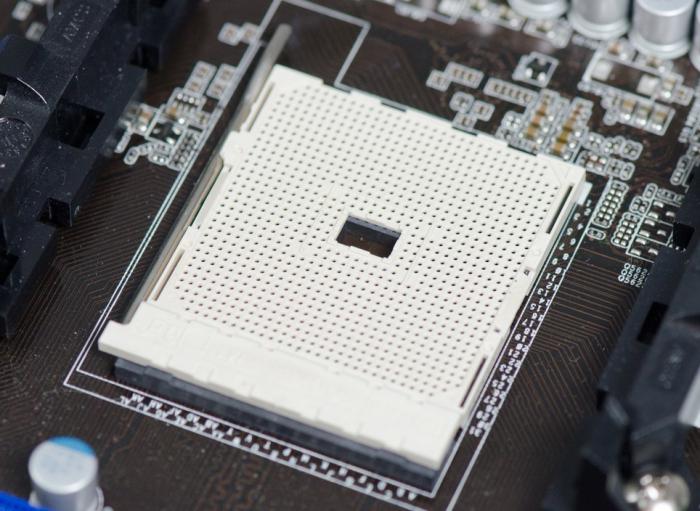 But they “do not shine” against the background of peers, and not at all representatives of outdated architectures.
But they “do not shine” against the background of peers, and not at all representatives of outdated architectures. 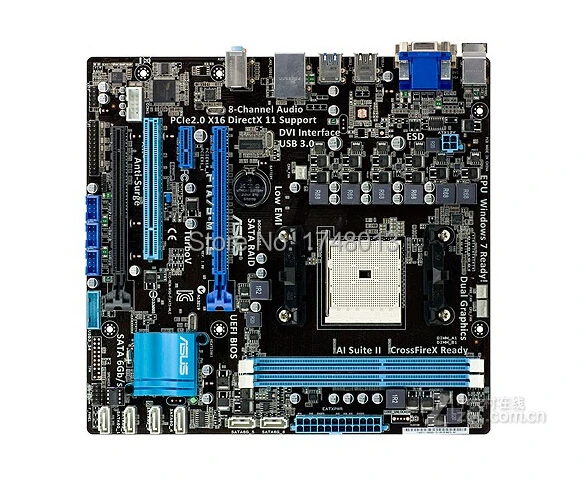 The younger ones (which do not have a head start in terms of the number of cores, which affects the packing time) behave worse, but it cannot be said that it is completely terrible.
The younger ones (which do not have a head start in terms of the number of cores, which affects the packing time) behave worse, but it cannot be said that it is completely terrible.  But they get the job done. Slowly but surely.
But they get the job done. Slowly but surely.  Mostly with themselves or with Intel processors of a higher class, but of earlier release years. But the «APU» remained almost at the same level in terms of processor performance, despite the change in architecture and other improvements. But perhaps progress has been more noticeable in other areas?
Mostly with themselves or with Intel processors of a higher class, but of earlier release years. But the «APU» remained almost at the same level in terms of processor performance, despite the change in architecture and other improvements. But perhaps progress has been more noticeable in other areas? 
 Therefore, we will consider in detail only those games that the A8-3870K can somehow cope with — there are not so few of them.
Therefore, we will consider in detail only those games that the A8-3870K can somehow cope with — there are not so few of them.  The latter are completely inferior to the younger A6. Pentium G45x0 is faster, of course, and how many years newer. In general, only the A4-3400 unambiguously lost its position, but no one doubted this — even “during its lifetime” it belonged to the budget segment itself.
The latter are completely inferior to the younger A6. Pentium G45x0 is faster, of course, and how many years newer. In general, only the A4-3400 unambiguously lost its position, but no one doubted this — even “during its lifetime” it belonged to the budget segment itself.  AMD also did not stand still, after all, so the new A8 went far ahead. Intel processors too — but in comparison with their own predecessors in the main.
AMD also did not stand still, after all, so the new A8 went far ahead. Intel processors too — but in comparison with their own predecessors in the main.